VETAFFAIRS



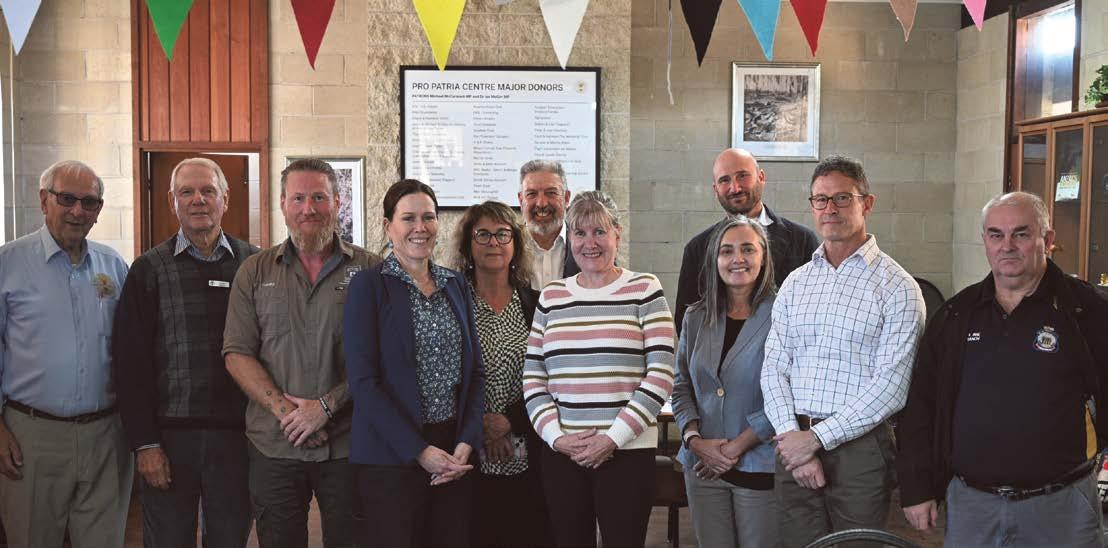
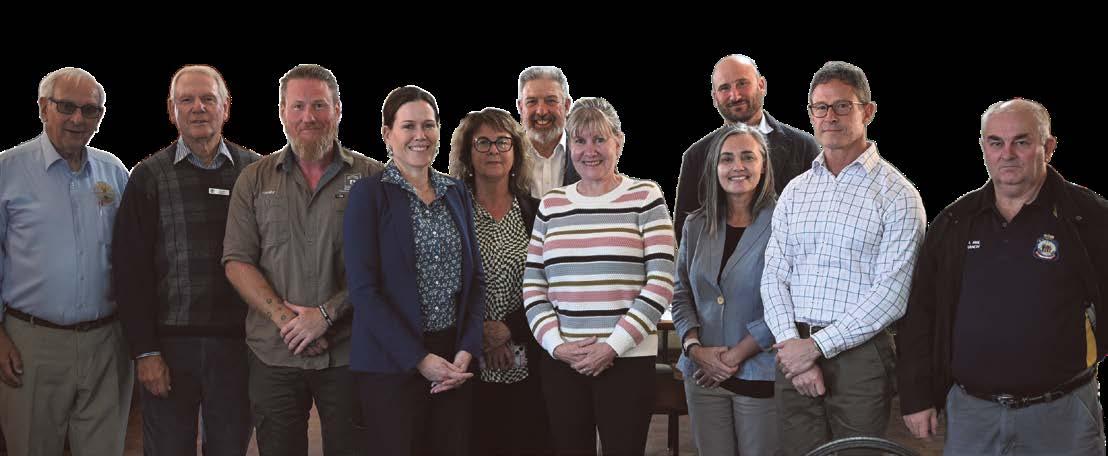
DVA is working with the veteran, defence and family community to co-design a new agency focused on veteran wellbeing and a national peak body for ESOs, as recommended by the Royal Commission into Defence and Veteran Suicide.
A special DVA taskforce has engaged with more than 1,000 veterans, serving ADF personnel, family members, ex-service organisations (ESOs) and service providers in a consultation and co-design process.
Teena Blewitt, head of the Taskforce on Wellbeing Agency and Peak Body, says that in “discovery sessions” for the wellbeing agency, her team heard many strong and consistent messages about what the agency should do and how it should do it.
‘Our veteran community told us the agency must bridge the trust divide that exists between veterans, families and the departments of Veterans’ Affairs and Defence,’ says Teena. ‘It needs a veteran-centric culture that prioritises the needs, preferences and experiences of veterans, ensuring that services are designed and delivered to maximise outcomes for veterans and families.’
That culture needed to be one rooted in empathy, collaboration and adaptability, with lived experience being the springboard to lived expertise at the heart of the organisation.
‘People expect the agency to say what it will do and do what it says,’ Teena adds. ‘They want families integrated into the wellbeing system, and for families to be defined broadly and inclusively. Importantly,
people want an agency that is independent, open and transparent.’
Delivering on the promise of openness and transparency is the driver behind a new program of community engagement that the Taskforce is undertaking.
Teena will lead a roadshow of information sessions around the country, feeding back to the veteran, defence and family community the messages the Taskforce heard through the wellbeing agency consultation and co-design process. These engagements will test potential models that could be presented to government.
‘We invite all veterans, serving ADF personnel, family members, ESOs and service providers to come to a session and hear about the direction the wellbeing agency is taking, and provide feedback on the models we have developed,’ she says.
Stakeholder contributions to the peak body consultation and co-design process have been equally generous.
Veterans and families are seeking a higher quality of service from organisations, easier systems to navigate, and a collective voice to advocate for veterans and families. ESOs want the peak body to deliver a unified voice to government, balanced and diverse representation in consultative activities, and more effective collaboration and building of capacity among themselves.
‘Like a wellbeing agency, a peak body must be trusted and independent,’ Teena explains. ‘Delivering outcomes for veterans and families must be at the centre of what the peak body does.’
A peak body that delivers this for veterans, families and organisations that support the sector will also provide DVA with a streamlined way to communicate more broadly with the sector, an expanded diversity of relationships to reflect the community, and stronger collaboration.
‘Another message from our consultations is clear – we need better, joined up relationships between veteran organisations and government to deliver improved services,’ says Teena. ‘It’s what we want, it’s what the ESOs want, and it’s what veterans and families expect.
‘This process has only been possible thanks to the people who have generously given their time and knowledge, and shared their experiences with us.’
The community consultation and co-design phase involved more than 80 workshops, and the Taskforce received more than 70 submissions and 150 survey responses.
For more information on the Taskforce, the findings of the consultation and co-design process, how to continue to engage with the Taskforce and when the roadshow might be coming an area near you, visit the DVA website (search for ‘Taskforce on Wellbeing Agency and Peak Body’).

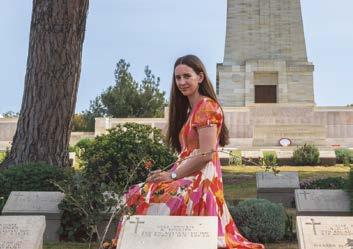
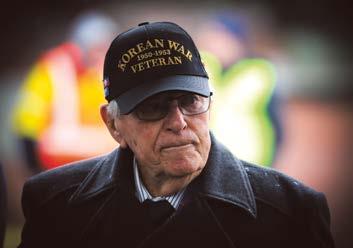
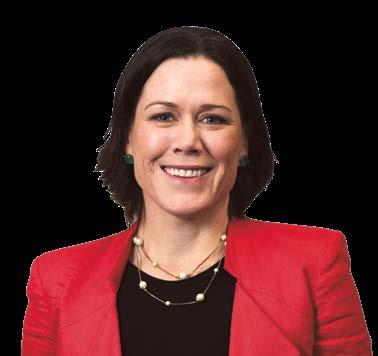
It is only through undertaking a substantial program of change and listening to the veteran community that DVA will be able to improve our services to address defence and veteran suicide, and related issues as highlighted by the Royal Commission.
In line with the Commission’s recommendations, DVA is evolving its engagement practices, with co-design increasingly a way of working in the Department. Hearing first-hand from veterans, families and ex-service organisations (ESOs) through workshops, forums and roundtables is the foundation of this work.
In recent months, we have been progressing the establishment of what will ultimately be veteran-designed entities: the veteran and family wellbeing agency and the ESO peak body. These initiatives are being developed in partnership with the veteran community to ensure they reflect the needs, experiences and aspirations of those they are intended to serve. Deputy Secretary Teena Blewitt is leading this effort and I encourage you to read her comments about the positive direction they are taking on the front page of this newspaper.
Another great example of our collaborative approach are 2 new online support programs from Open Arms: Shoulder to Shoulder, which provides peer-to-peer support for veterans, and families and carers; and Stronger We Stand, which delivers workshops for families and carers experiencing suicidal distress or those bereaved by suicide. These are accessible resources developed in partnership with lived-experience communities and available to anyone in the veteran community. (Please see pages 12–13 for more about these initiatives.)
I want to take this opportunity to acknowledge the significant contribution made by Gwen Cherne, Australia’s inaugural Veteran Family Advocate Commissioner. Gwen was appointed in 2020 to represent
Alison Frame Secretary, Department of Veterans’ Affairs
the perspectives of families in policy and decision-making across government – but in that time she has given so much more. As her statutory 5-year term draws to an end, I wish to sincerely thank Gwen on behalf of the Department for the passionate yet pragmatic way she has helped us to put families at the heart of everything we do. Gwen has penned a striking final reflection on her time as Commissioner and I commend her thoughts to you. (See page 21.) Gwen’s work will continue to benefit veteran families for years to come, and her legacy presents a solid foundation for her successor.
Gwen Cherne departs on a high note, having led DVA’s support for a Tragedy Assistance Program for Survivors Postvention Workshop in Sydney last month. This 4-day workshop saw more than 30 bereaved family members of ADF veterans who died by suicide engage in healing, trauma-informed education, reflective remembrance and connection. By drawing on international expertise, and adapting it for the Australian context, this Australian-first initiative is a prime example of how we are exploring new ways to support veteran families in deeply personal and practical ways.
We know that veteran wellbeing requires a holistic approach that recognises different veterans have different needs – there is no ‘one
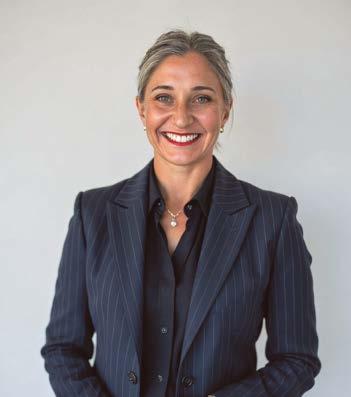
size fits all’ solution. DVA’s Veteran Wellbeing Grants program continues to fund innovative activities that enhance wellbeing in meaningful ways. In the last round, music and creativity workshops delivered by Gateway Care provided a non-verbal outlet for expressing difficult emotions and experiences. Meanwhile Inverloch RSL’s Bonsai tree educational workshop invited veterans and partners to try their hands at living art, helping to enhance focus and creative expression, and relieve stress.
This approach to supporting innovative programs also extends to clinical programs. DVA is currently finalising the processes to make psychedelic assisted psychotherapy an option for those with severe PTSD and Treatment Resistant Depression, under strict medical safety provisions. Our Chief Psychiatrist, Associate Professor Jon Lane, is actively looking into how we can better support other innovative approaches to mental health treatments.
On Anzac Day, as we marked 110 years since the Gallipoli landings, for the first time veterans and family members were part of DVA delivery teams on the ground in both France and Türkiye. The initiative has added a special new dimension to the overseas commemorations and we are looking to expand it next year. Given their strong personal connections to military service, it is unsurprising that our Anzac volunteers found their involvement to be a powerful emotional experience. I encourage you to read their reflections page 19
On 25 June, hundreds of people gathered at the National Korean War Memorial in Canberra for a poignant National Commemorative Service to mark 75 years since Australians first served in the Korean War. It was a significant milestone that honoured both the veterans who served and those who never returned, and their family members. (You can read more on pages 26–27.)
This year also marks the 80th anniversary of the end of the Second World War. The Australian War Memorial and DVA are commemorating this with various activities, including a symposium and a special Last Post Ceremony on 15 August.
On 31 August, DVA will host a National Commemorative Service in Canberra to mark the 75th anniversary of Australian service in the Malayan Emergency, recognising Australians who served in that conflict. These are significant anniversaries, and we will cover them in more detail in the next edition of Vetaffairs
Finally, I was honoured in May to travel to Papua New Guinea for the committal service of 2 aviators whose Beaufort A9-186 was listed as missing in action in the Second World War. (You can read their story on page 29.) The ceremony was very moving and importantly, the 2 aviators will be cared for in perpetuity by the Office of Australian War Graves in the beautiful Bomana War Cemetery, for which DVA is responsible. Lest we forget.

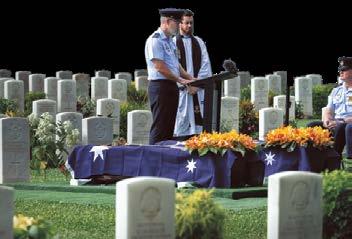


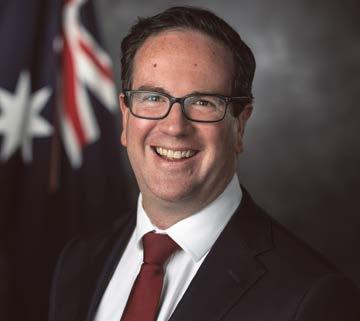
It was a great privilege to be reappointed as the Minister for Veterans’ Affairs and Defence Personnel after the re-election of the Albanese Government in May.
I will continue to give everything to ensure that Australians are attracted to serving our nation in our ADF, and be confident of them and their families being respected and well supported by their leadership, mates and the Defence organisation, as well as being safe in the knowledge that whatever may befall them in service, they will be properly looked after and their service acknowledged and commemorated by a grateful nation.
Over the last 3 years, we were able to achieve a great deal together – but there’s more to do.
During the last term of government, we invested in DVA’s frontline claims processing staff to eliminate the unallocated claims backlog, successfully introduced and passed the Veterans’ Entitlements, Treatment and Support (Simplification and Harmonisation) Act 2025 , and responded to the Final Report of the Royal Commission into Defence and Veteran Suicide, accepting the overwhelming majority of the Royal Commission’s recommendations.
As Minister for Veterans’ Affairs, I am determined to build on the successes of our last term in office to ensure that we continue to improve the services and support provided to the veteran community.
My key focus is the implementation of the Government’s response to the Royal Commission. This
The Hon Matt Keogh MP Minister for Veterans’ Affairs and Minister for Defence Personnel
will result in significant reform impacting the entire Defence and veteran community.
Consistent with the capstone recommendation (Recommendation 122), the Government has already legislated to establish the Defence and Veterans’ Services Commission by the end of September 2025. Former Commonwealth Ombudsman, Mr Michael Manthorpe PSM, was appointed as interim head of the Commission to lead that work as part of the Government’s response. The Commission will provide independent oversight and evidence-based advice to improve suicide prevention and wellbeing outcomes for serving and ex-serving ADF personnel.
Separately, a Commonwealth-led Implementation Taskforce has been established in the Department of the Prime Minister and Cabinet. The Taskforce is advising the Government on the sequencing and implementation of the response to the Royal Commission, including agreed recommendations and how best to progress recommendations that required further consideration.
In December last year when we released our response, we funded DVA to undertake consultation with the veteran community on the co-design of a new agency focused on veteran and family wellbeing (Recommendation 87); and to co-design the establishment of a peak body for ex-service organisations (ESOs) (Recommendation 89).
In recent months, DVA has conducted extensive consultation and co-design activities with the veteran
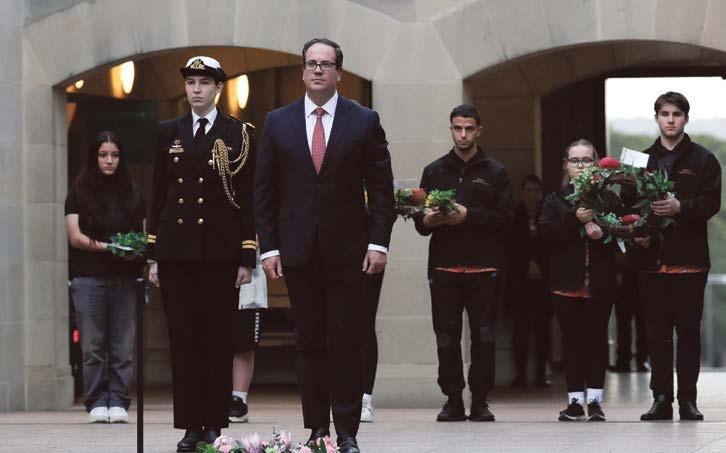
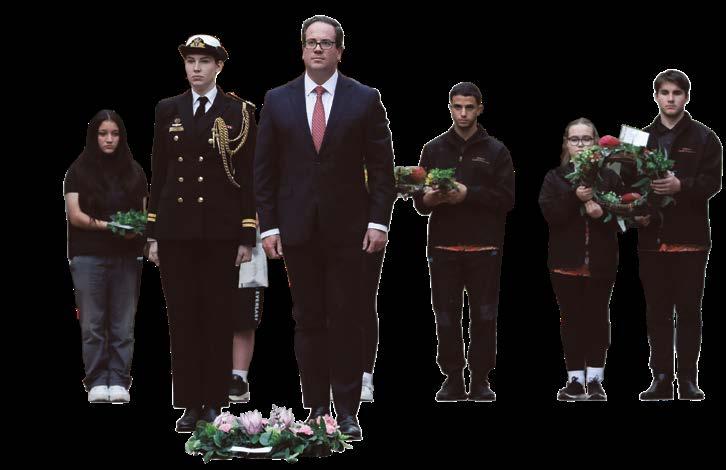
and family community to progress this work.
Nobody understands better how a wellbeing agency could support veterans and their loved ones more than you, the veteran community. I thank all of you who have generously provided your time and input. It is important that these new entities are designed by veterans and families, for veterans and families.
The Royal Commission also told us the veteran community needs a national peak body that advocates with one voice for your needs. In 2024, prior to the handing down of the Royal Commission’s recommendations, DVA commissioned some early work on this initiative, publishing a report on its findings – this has been used as the baseline for the co-design of the peak body.
The establishment of these entities is for veterans and families and therefore in order to be successful, they need to be co-designed by veterans and families. We have been gathering views on what you want from these new entities and that co-design process is underway. We want to ensure these entities not only meet your needs but ensure you feel confident reaching out and using their services. This is an important step in rebuilding the trust between you and DVA and Defence.
Ultimately, how these entities look belongs to you. They will be built by you, to serve you. Your input and lived experience is critical to ensuring we create bodies that are owned by you and tailored to meet your needs. We are determined to get this right so, as the Royal Commission intended, these new supports empower veterans and families to thrive.
I also want to take this opportunity to provide an update on some important work to ensure veterans receive the best possible advocacy support.
DVA is supporting the ex-service community to establish an independent Institute of Veterans’ Advocacy. Following public consultation in 2024, this sector-led Institute will be responsible for training, registration and accreditation of compensation and wellbeing advocates working with veterans and families as they engage with
DVA. The Institute will enhance governance and standards in the advocacy sector, and ensure the focus of approved advocates is on veteran wellbeing.
The functions of the Institute include establishing a code of ethics and minimum training requirements for veteran advocates. It will accredit veteran advocacy service providers, including continuing professional development and training for advocates. Members will be provided with access to a range of benefits and tools, including improved and nationally consistent training, and establishing and administering a nationally consistent complaints handling process.
Veterans and families do not need to pay for advocacy support or hand over a share of their statutory entitlements in commission-based fees. The Institute will accept feefor-service advocates provided they are willing to comply with the code of conduct.
There is no difference in processing timelines, outcomes, or decision making by DVA if an advocate is used. If you do use an advocate, there is no difference in the outcome for you when using a free ESO advocate, or a fee-for-service one. The same laws, processes and workflows are followed by DVA delegates in reaching their decisions.
While veterans are of course able to engage an advocate, the Government is keen to ensure they are provided with informed advice and not left financially disadvantaged in accessing their statutory entitlements. As always, if you need an advocate, please make sure to choose one that is on the Accredited Advocate Register (www.advocateregister.org.au).
These are all meaningful reforms to improve how veterans and their families are supported across the country. As your Minister, I will be working to continue the momentum on what we’ve already achieved. We campaigned for the Royal Commission and I will work tirelessly to ensure the Government’s response to its recommendations is implemented so all those who have selflessly served our nation receive the services and supports they need.
From 1 July 2025, veterans can earn more, and the value of their assets can be higher, before their pension payments are affected.
The rise in income and asset amounts is in line with the annual indexation process and the income free areas and asset value limits that are used to calculate rates of income support pensions.
Different limits may apply for veterans who are assessed under transitional rules. Disability compensation payments and war widow(er)’s pensions are not subject to the income and assets tests.
Related to these thresholds increasing, some recipients of the service pension, income support
supplement, veteran payment and social security age pension may see an increase to their payments.
Permanent impairment payments, eligible young person payments and the limits for household services and attendant care under the Military Rehabilitation and Compensation Act 2004 (MRCA) and the Safety, Rehabilitation and Compensation (Defence-related Claims) Act 1988 (DRCA) have increased.
For more information, including a summary of the new income and asset thresholds, pension rates and allowances please visit: www. dva.gov.au/financial-support/ payment-rates
The Defence Honours and Awards Appeals Tribunal is an independent statutory body established under the Defence Act 1903 to consider Defence honours and awards matters.
The Tribunal provides an avenue for veterans to seek review of eligibility for a defence honour, a defence award, or a foreign award, after an application has been refused by the Department of Defence.
A reviewable decision is a decision to refuse to recommend a person, or a group of persons, for a defence honour (such as a gallantry or conspicuous service award), a defence award (such as a campaign or long service award) or a foreign award.
The service that is the subject of the reviewable decision needs to have been with or, at the direction of, the ADF and rendered after 3 September 1939 (the beginning of the Second World War).
It is important to note that the Tribunal can only review Defence decisions. This means that an initial
Dear Editor
I wish to compliment the Office of Australian War Graves (OAWG) for what they have been doing to commemorate the war service of Australian veterans.
I have been in contact with the Office of Australian War Graves on a number of occasions when I have been requesting commemorations for deceased Australian ex-POWs. (All deceased Australian ex-POWs are eligible for an official commemoration from the OAWG.). I have found that the officers at the OAWG have been very helpful.
application for an honour or award needs to be made to Defence, and refused, before seeking review in the Tribunal. A person seeking review in the Tribunal must be either:
• the person who made the original application to Defence, or
• one of a group of people who made that application to Defence.
The Tribunal cannot review:
• applications to amend the eligibility criteria for defence honours, defence awards, or foreign awards
• applications for Australian awards that are not defined as defence honours or defence awards under the Defence Regulation 2016 (such as unit citations or badges)
• applications to create a new honour or award
• eligibility for repatriation benefits.
More information about the Tribunal, including how to make an application for review is available at www.defence-honours-tribunal.gov. au. You can also phone the Tribunal Secretariat on (02) 6266 1019.
I remember when working for DVA (1978–2006) receiving good feedback from veterans. This was much appreciated.
Best regards Patrick Bourke
Thank you for your kind words, Patrick. This year, the OAWG marks 50 years of faithful service to those Australians who lost their lives due to their war or operational service – and to those they left behind. You can read more on page 28 of this edition. The Editor
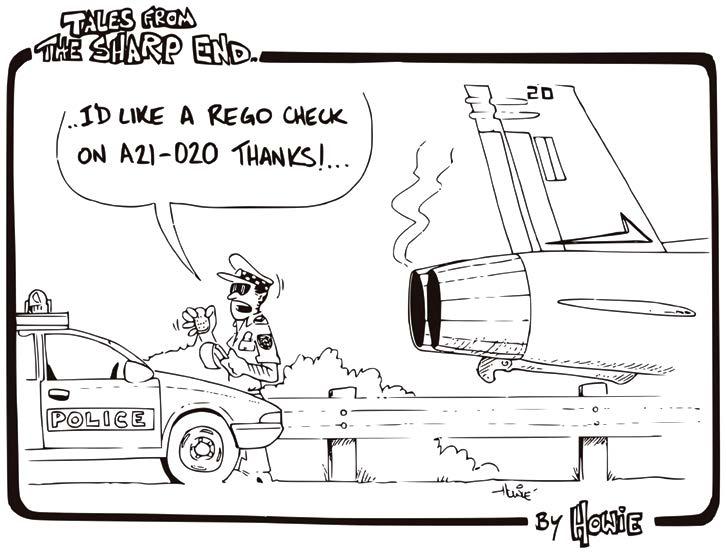
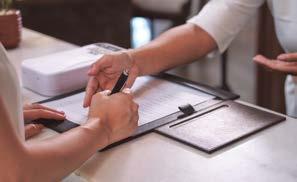
DVA is committed to making the claims process as fast as possible for the entire veteran community. To support this, we have asked advocates to ensure that all claims are completed and lodged through MyService.
Nothing is changing for individual veterans who wish to lodge a claim.
DVA will always provide direct, one-on-one support to individual veterans to lodge claims in the manner that best suits them, including in person at one of our Veterans’ Access Network offices or by email.
DVA is providing direct support to all advocates who are starting to use MyService. If you are part of an organisation that represents multiple clients, please register through MyOrg.
DVA’s Claims Lodgement Assistance (CLA) team is also available to provide support to ex-service organisations (ESOs). If needed, the CLA team will work alongside the ESO during the claim lodgement process to help them learn how to use MyService.
Advocates requiring assistance can reach out to the CLA through their state/territory Deputy Commissioner.
Claims must be complete to progress to assessment. If a claim is submitted without all the required information, DVA will send back advice on what is required to ensure the claim is complete.
If a lodged claim is incomplete, the date of lodgement with DVA will still be registered. This will ensure veterans have immediate access to support services, including the Provisional Access to Medical Treatment program, as needed.
A complete claim includes:
• a fully completed claim form
• correct Proof of Identity that supports the veteran’s circumstances
• a medical diagnosis from a qualified medical practitioner for each condition being claimed.
The establishment of the Defence and Veterans’ Services Commission (DVSC) is underway. This work is being led by the Interim Head of the DVSC, Mr Michael Manthorpe PSM, supported by a team in the Department of the Prime Minister and Cabinet (PM&C).
The DVSC is being created in response to Recommendation 122 of the Royal Commission into Defence and Veteran Suicide. It will provide independent oversight and evidence-based advice to the Australian Government on reforms to improve suicide prevention and wellbeing outcomes for serving and ex-serving ADF members.
DVA will continue to assist veterans to pay for their medical diagnosis where this is required and regardless of how they lodge their claim.
If a claim involves complex conditions without a supporting diagnosis, the veteran may be referred to an Independent Medical Examiner. This will ensure that only the minimum necessary medical assessments are conducted, at no cost to the veteran, to support their claim.
Importantly, no matter how any veteran chooses to lodge a claim with DVA, or the amount of information provided, DVA will always initially assess if crisis supports or urgent assistance are needed to ensure the veteran is appropriately supported, before any further action is taken.
Once established, the DVSC will operate independently of other government agencies, such as DVA and the Department of Defence. The DVSC will begin operations on 29 September 2025.
The establishment of the DVSC is being informed by the findings of the Royal Commission, the Veterans’ Entitlements, Treatment and Support (Simplification and Harmonisation) Act 2025 , the review of the legislation by the Senate Foreign Affairs, Defence and Trade Legislation Committee, and the views of the defence and veteran community.



After consultation with veterans, families, advocates and service providers, we’ve refreshed our website (www.dva.gov.au) to better meet your needs.
We’ve given our website a comprehensive makeover and implemented significant improvements in response to your feedback. Everyone who uses the DVA website will experience:
• refreshed visuals and easier navigation
• clearer, easier-to-understand content on priority pages
• a better search function
• a seamless design experience.
Your feedback made this possible.

These updates are the direct result of valuable input gathered through workshops, surveys and user testing with veterans, families, advocates and service providers. Your suggestions have helped us create a better website.


The DVSC is separate from the other recommended new agency focusing on veteran wellbeing within the Department of Veterans’ Affairs (Recommendation 87), the Ex-Service Organisations Peak Body (Recommendation 89), and the Royal Commission Implementation Taskforce established within PM&C (read more on page 1). The Taskforce is advising the Government on the sequencing and implementation of the response to the Royal Commission, including Recommendations 87 and 89.
The interim DVSC encourages additional views from the defence and veteran community to support establishing the Commission.
For more information and how to get in touch, visit the website of the PM&C at www.pmc.gov. au/domestic-policy/defence-and-veterans-services-commission.
DVA provides reimbursement of travel expenses to Veteran Card holders and an attendant (if required) who need to travel for:
• treatment covered by their Veteran Card
• medical or rehabilitation assessments arranged by DVA.
DVA can also reimburse travel related to an appeal, for example to attend a hearing at the Veterans’ Review Board. Please contact us directly for advice on your eligibility for travel assistance related to appeals.
The following changes apply to DVA clients covered under the Military Rehabilitation and Compensation Act 2004 (MRCA) and the Safety, Rehabilitation and Compensation (Defence-related Claims) Act 1988 (DRCA).
Meal reimbursements
If you submit a claim for trips undertaken from 1 July 2025, DVA will automatically provide a payment for meals for round trips above 100 km without the need to provide a receipt. The rate payable depends on the distance travelled, and if overnight accommodation was needed.
For trips taken before 1 July 2025, you can still apply for meal reimbursements if your claim includes an accommodation component. If your claim does not include an accommodation component, you may still be able to claim a meal reimbursement where you will be required to provide a reason for incurring meal costs as part of your travel and receipts.
Accommodation reimbursements
If you need to stay overnight, costs will be reimbursed as follows:
• For commercial accommodation, if your receipt is less than DVA’s threshold amount (based on Australian Taxation Office rates), you will automatically receive a full reimbursement. If the receipt is above the threshold, you will need to provide details explaining why the higher amount was reasonably incurred to be fully reimbursed.
• For private or subsidised accommodation, DVA will reimburse you at a standard rate. As with meals and commercial accommodation, you can submit a claim for a higher amount with a receipt and details of the reason the cost was higher than the threshold.
There is no change to entitlements for Veteran Card holders accessing travel assistance under the Veterans’ Entitlements Act 1986 , including travel for treatment of conditions covered under Non-Liability Health Care.
You can submit travel reimbursement claims online or by mail. More information is available on the DVA website (search for ‘Travel for treatment’).
A range of updates have been made to the way travel claims are processed and displayed in MyService for those eligible under MRCA and DRCA. From 1 July 2025 claim statuses will now be available in MyService for all new MRCA and DRCA travel claims. Developed in response to veteran feedback, these enhancements will improve the claims process.
Travel allowances under the Veterans’ Entitlements Act 1986 (VEA), the Australian Participants in British Nuclear Tests and British Commonwealth Occupation Force (Treatment) Act 2006 and the Treatment Benefits (Special Access) Act 2019 are increased annually on 1 July in line with the Consumer Price Index.
The increases in the table below apply to the private vehicle kilometre rate, meal and accommodation allowances for eligible Veteran Card holders travelling for treatment, or for disability and income support claims.
* A meal allowance is not paid on a day where an accommodation allowance is paid as a meal component is already built into the accommodation allowance.
† Refers to the number of times an allowance is paid when an entitled person travels with an attendant. More information is available on the ‘Travel for treatment’ pages of the DVA website, but if you would like to talk to someone you can:
• request a call back from us online through MyService (Register or sign in to MyService via myGov at my.gov.au.)
• phone us between 8 am and 5 pm, Monday to Friday on 1800 VETERAN (1800 838 372).
DVA has developed new resources for DVA clients and families outlining the services and supports available to veterans living in an aged care home.

accessing DVA supports and services that meet the client’s needs
resources to help aged care staff gain a better understanding of the veteran’s or war widow(er)’s life experience a set of recognition products with a poppy motif that DVA clients can choose to display in their residential aged care home.
The veteran’s guide to living in an aged care home is designed to assist and support veterans and families living in an aged care home.
The guide and related resources describe the support available for clients and their families through DVA, ex-service organisations and other advocacy services to enable them to live well when living in an aged care home.
The focus is on recognition, the importance of lifestyle, accessing clinically needed supports and remaining connected to friends, family and community when living in an aged care facility.
The guide and related resources include:
• information on developing care plans with your aged care provider
Designed in collaboration with aged care providers, peak bodies and those with lived experience, the guide is easy to read, informative and tailored specifically for the use of veterans, families and their carers.
In addition to the veteran’s guide, DVA has also published resources to help residential aged care providers and their teams better understand the unique needs of DVA clients, and the additional support that may be available to them.
The veteran’s guide to living in an aged care home has been mailed out to DVA clients living in residential aged care with a letter from the Repatriation Commissioner.
You can download the guide and explore the full range of aged care resources on the DVA website. (Search for ‘Aged care resources’.)
Vietnam War veteran Ken Robinson has found joy and satisfaction in the small things that fill his days.
The 91-year-old spends time each day working in the container garden in his backyard. ‘It’s a form of therapy. I like to see things grow,’ he says from his home in Woodgate on the coast of south-east Queensland, where he lives alone.
His gardening contributes to another passion – cooking. Vegetables such as bok choy, carrots and celery go straight from the garden to the chopping board in his kitchen.
Seated on his ‘wheelie walker’ – essential to his mobility in the house and garden – Ken spends his afternoons cooking Asian food. ‘There’s something special about adding a few things from your own garden into a stir fry,’ he says.
While Ken works, classical Chinese music fills the house. He is now deaf to a lot of sounds, but the classical music breaks through, masks his tinnitus and helps him relax.
‘Who would have thought a little box on a stick with strings attached could make such a difference?’ he says of the erhu, sometimes called the Chinese violin. ‘I can hear them as clear as a bell – instruments that were first heard in China more than a thousand years ago.’
It hasn’t always been like this for the former military policeman, who has been diagnosed with PTSD. ‘Like many veterans, I had given up,’ he says. ‘I could have easily become one of those statistics.’
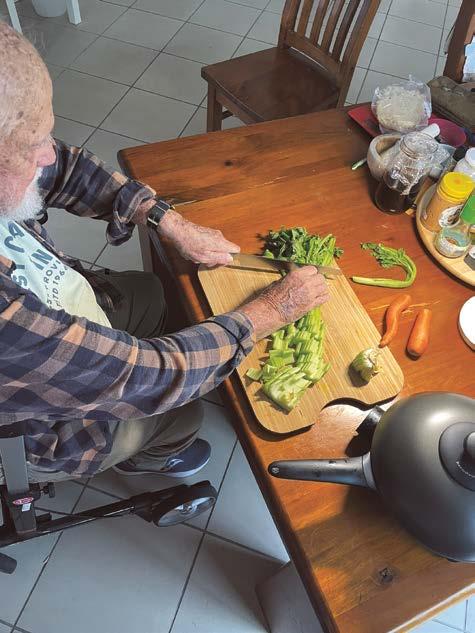
‘I’ve been lucky to have my family’s help. My son and daughter have been there for me. They’ve helped me get through some dark times and find the space to be positive.’
Ken says that getting started involved some paperwork and phone calls, but he soon discovered there’s a lot of support available. Accessing the right services made a real difference to his ability to live well at home. 'Remember in the long run that the services are there to help you live well,' he adds.
With a good team supporting me, including my family, I can live out my life at home perfectly well.
Ken and his daughter worked with his GP to develop a personalised care plan, which includes physiotherapy, podiatry, optometry and dental support treatments as required, along with regular GP visits.
His broader care team also includes an occupational therapist who visits Ken regularly, working with him on his treatment plan and providing DVA-funded aids and equipment to make life easier.
‘The occupational therapist is magnificent,’ Ken says. ‘She got me all the toys I need to live out my life independently at home.
‘There are things I didn’t even know about. Small things, when combined can make a big difference,’ he says, pointing out the small wedges installed in doorways to overcome trip hazards, an indoor clothesline with special pegs so he can do his laundry without needing to go outside, and the shower head with flexible tubing that allows him to sit on a chair while showering.
A BlueCare nurse comes regularly to help Ken shower. He also gets home care support through DVA, with a carer visiting weekly to help with shopping, cleaning and meal preparation.
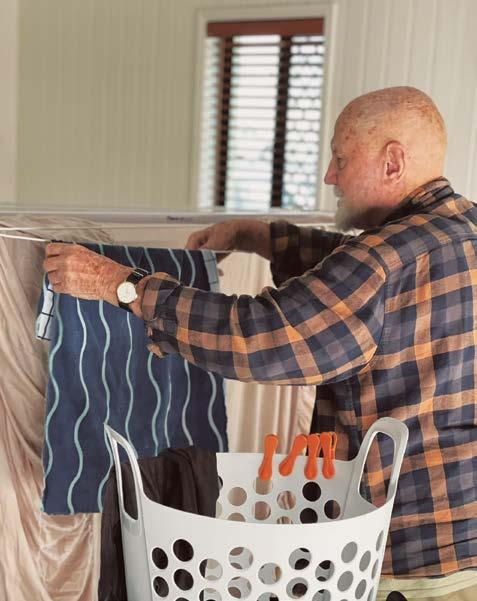
‘With a good team supporting me, including my family, I can live out my life at home perfectly well.’ This is important for Ken, who likes his personal space and values his privacy.
His message to other veterans who may have had similar experiences is: ‘There is help available out there. Reach out and ask.’
• For more details about DVA’s aged-care services, veterans and families can visit the DVA website (search for ‘Care at home or aged care’) or call 1800 VETERAN (1800 838 372). Useful aged-care guides are available at www.dva.gov.au/ac
• For free, military-aware mental health support, Open Arms – Veterans & Families Counselling is available 24/7. Phone: 1800 011 046
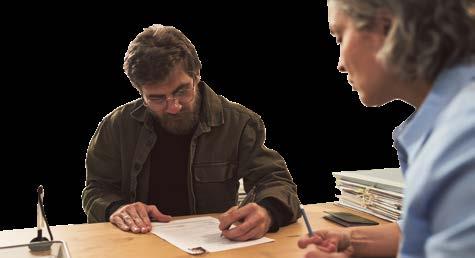
There’s a new screening program to detect this deadly disease. Are you eligible?
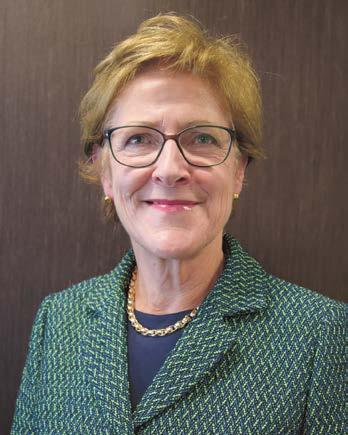
JENNY FIRMAN Chief Health Officer Department of Veterans’ Affairs
I am sure many of you will remember a time when smoking was common in Australian society and the workplace. I remember when I joined the Navy many years ago that it was common for people to smoke at their desks while working. Cigarettes were relatively cheap and available for even less when away at sea or on deployment.
Smoking rates have fallen steadily in Australia over the last 30 years. The Australian Institute of Health and Welfare reports that the proportion of people aged 14 and over who smoke daily has more than halved: from 24% in 1991 to 8.3% in 2022–2023. This is very important, as about 20% of all cancer deaths are a direct result of smoking.
Despite the falling rates of smoking, lung cancer is the fourth most diagnosed cancer in Australia and the leading cause of cancer-related death in Australia. It is estimated that it accounted for 17% of all cancer deaths in 2022, and that there were
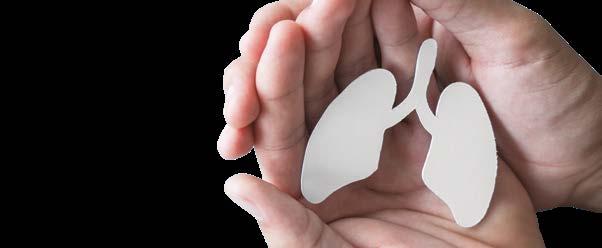
more than 15,000 new cases and nearly 9,000 deaths from lung cancer in Australia in 2024.
You may think this is surprising given that smoking rates are falling. Unfortunately, lung cancer is often diagnosed late, when there is advanced stage disease for which there are limited treatments, resulting in poor survival.
To address this, the Australian Government is introducing a National Lung Cancer Screening Program (NLCSP). Similar screening programs already exist in the UK, Poland and Croatia. Screening can detect up to 70% of lung cancers in the early stages. A shift in the stage at which lung cancer is diagnosed has been shown following the introduction of lung cancer screening, with more lung cancers diagnosed at stages 1 and 2.
The program started on 1 July 2025 and eligible Australians aged 50–70 are able to participate and have a low-dose Computed Tomography (CT) scan every 2 years to look for signs of lung cancer.
You are eligible if you are asymptomatic and considered high risk due to being:
• aged between 50-70 years
• a smoker or having quit smoking in the past 10 years
• a smoker of at least 30 pack-years (e.g. smoking a pack of cigarettes per day for 30 years or two packs a day for 15 years at any point in your life).
While smoking is not the only cause of lung cancer, the screening program is targeting smokers or ex-smokers as this group can be identified for screening. Your general practitioner (GP) can discuss the program with you to decide if screening is appropriate and then complete an NLCSP low-dose CT scan request form. The cost of the scans are covered by Medicare. The costs of the consultation with your GP will be covered by DVA for those with a Gold Card and eligible veterans with a White Card.
The National Screening Register (an opt-in process) will maintain a record of your screening
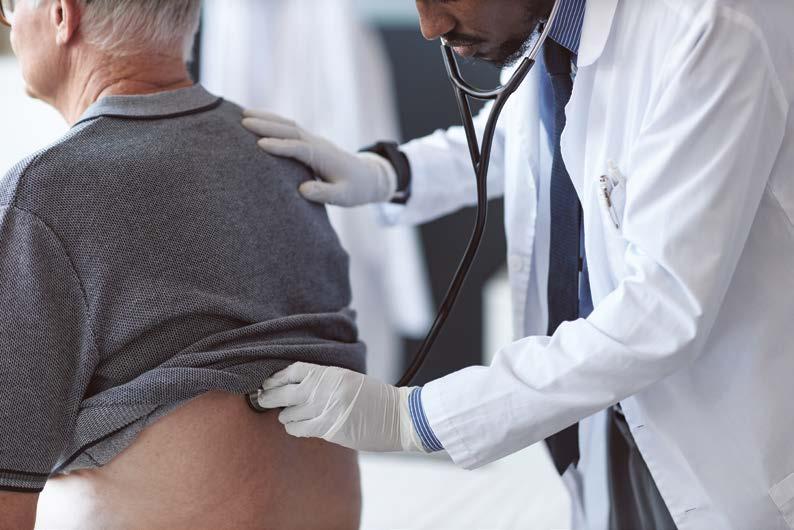
and send reminders as needed. This is an important national database for the program and is used already for bowel cancer and cervical cancer screening.
Unfortunately, lung cancer is often diagnosed late, when there is advanced stage disease for which there are limited treatments, resulting in poor survival.
Your GP will be able to discuss with you the risks of screening and any concerns you have. The CT scan is low-dose and the radiation dose is less than one year of exposure to natural radiation in normal life. Following the scan, your GP can discuss the results with you, including any further investigations that might be needed.
Some scans are expected to show evidence of other diseases, not just lung cancer. For instance, some scans might show evidence of prior tuberculosis infection, emphysema or heart disease. It is important that these “incidental findings” are also acted upon.
Of course, for those who are still smoking this is an opportunity to consider stopping. DVA supports smoking cessation aids and medication. Other supports, such as counselling, are available through Non-Liabilty Health Care for mental health and you may wish to discuss these with your GP.
This new screening program is an important step in improving the outcomes for lung cancer and is open to all Australians, including veterans. Take this opportunity to ask your doctor about this and other available preventive health screening at your next visit.

Do you strain to listen or have difficulty following conversations? Are you often asking people to repeat themselves or to speak up?
These are just 2 questions from a useful hearing checklist – part of DVA’s new suite of resources to help veterans consider all their options and make informed decisions about their hearing.
The resources include a hearing services brochure, which will help you understand the various services, treatments and devices available.
The Veteran’s guide to better hearing provides more detailed information and guidance to ensure you receive the support you need to meet your hearing needs.
The information guides are part of DVA’s veteran-centered approach to hearing services to ensure veterans receive improved access to quality hearing support that better meets their needs. The Veteran Hearing Services Framework is focused on individual needs and aims to empower veterans and their families to make choices that are best for them.
The framework simplifies the process for veterans to receive funding for appropriate hearing devices, including complex hearing requests, ensuring fair and consistent decisions. It also makes it easier for veterans to request hearing aids by helping them to better understand the services available and steps involved, resulting in a more positive, straightforward experience.
The framework includes updated request forms to expedite complex hearing requests, updated
UNSW Sydney is exploring the service access needs of veterans who come from migrant or multicultural backgrounds, including understanding what makes it easier or harder to access support.
Veterans and families are invited to participate in the research and talk about their service needs and experiences.
Scan the QR code for more information or visit https://tinyurl. com/unswcald

internal DVA review processes, and enhanced resources and communication with veterans, families and service providers.
If you’ve ever felt embarrassed when you can’t hear what others are saying, or your family is getting frustrated because you can’t hear them, we recommend you make an appointment with a hearing provider in your local area. You can do so by visiting the local hearing services directory of the Hearing Services Program, which provides subsidised hearing devices to up to 10,000 veterans each year.
The program offers fully subsidised devices that work for the majority of people – at no cost to you for the device, fitting, training and maintenance. Your provider should present you with devices and options from a range of manufacturers. And if they recommend partially instead of fully subsidised devices, they should explain why.
Please note DVA may not reimburse you for hearing devices once you have purchased them. Therefore, it is important to discuss your options with your provider before purchasing devices. Similarly, if you have sought prior approval of funding from DVA, please wait until you receive a determination before proceeding with purchasing devices.
To access our new resources please visit the ‘Hearing services’ page of the DVA website or contact us at Hearing@dva.gov.au
Hubs are offering veterans and families support closer to home, with 2 new sites open and 5 other locations revealed.
Hubs are offering veterans and families support closer to home, with 2 new sites open and 5 other locations revealed.
Veterans and families will soon have more places to access tailored support, with 2 new Veterans' and Families' Hubs opening their doors in Northern Adelaide and Queanbeyan, and Hub locations confirmed in New South Wales, Queensland and Western Australia.
A new Hub servicing the Northern Adelaide region is now open, offering a range of integrated services and support to around 11,000 local veterans and families. Operated by Lives Lived Well, the Hub is conveniently located within the Playford Health and Wellbeing Precinct at 44–46 John Rice Ave in Elizabeth Vale, close to the Edinburgh Defence Precinct.
On 15 April, veterans and families attended the opening of the new Queanbeyan Hub at 251 Crawford Street, Queanbeyan NSW. RSL LifeCare operates the Hub, working in partnership with RSL NSW and other local ex-service organisations. Services will soon be available in Canberra by appointment only from a smaller ‘spoke site’ located at 26 Archibald Street, Lyneham ACT.
RSL LifeCare is also establishing new Hubs in the Hawkesbury, Hunter and Tweed/North Coast regions in NSW.
The Hawkesbury Hub will be established at 288 Windsor Street in Richmond, involving the adaptive re-use and restoration of the historic

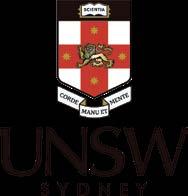
Richmond Courthouse. Around 20,000 veterans and families live in the Hawkesbury region. While construction at the site is underway, veterans and families can access support via a temporary Hub at the Windsor RSL, located at 36 Argyle Street, South Windsor.
The Hunter Hub will be at 48 Ken Tubman Drive in Maitland. Following significant renovations, this site will serve the region's 22,000 veterans and families. Interim services will continue from the temporary Hub at 984B Hunter Street, Newcastle West.
The Tweed/North Coast Hub will be at 145 Wharf Street, Tweed Heads. The Hub will be established on a dedicated floor of the building and offer exclusive rooftop access. Interim services are currently available from a temporary space within the same building until the Hub floor is complete.
The Southwest Perth Hub will be at 65 Dickson Road, Rockingham, WA. RSL WA is leading the comprehensive redesign and refurbishment of the space. When completed, more than 8,000 veterans and families, along with some 4,100 serving members located at the HMAS Stirling Royal Australian Navy base will have improved access to support services.
These new Hubs are part of the Australian Government’s $46.7 million commitment to establish 8 new Hubs, ensuring even more veterans and families can access the support they need, closer to home. For more information, visit
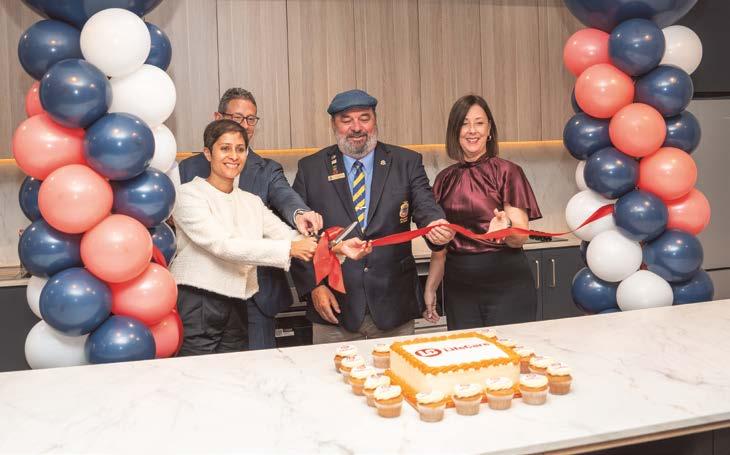
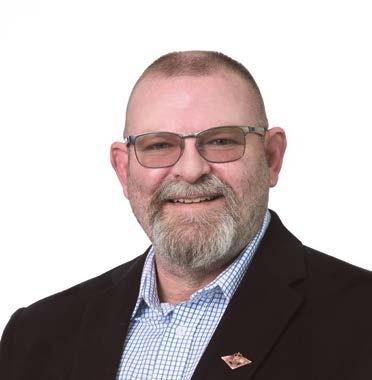
JON LANE
Chief Psychiatrist Department of Veterans’ Affairs
In recent years, ‘lifestyle psychiatry’ has emerged as a dynamic and transformative approach within the field of mental health. It emphasises the powerful influence of everyday habits on mental wellbeing, suggesting that sustainable changes in behaviour can significantly prevent, manage, and even reverse certain mental health conditions. Rather than focusing solely on medication or traditional psychotherapy, lifestyle psychiatry promotes a holistic view, integrating evidence-based strategies rooted in lifestyle modification.
A healthy diet is crucial for brain function and emotional stability. Research consistently shows a strong connection between diet and mental health. Nutritional psychiatry links poor eating habits with an increased risk of depression, anxiety, and cognitive decline. Diets rich in processed foods, sugars, and unhealthy fats can contribute to inflammation and oxidative stress, both of which are associated with mood disorders. Deakin University’s ‘Food and Mood Centre’ has a lot of resources for help here: see www.foodandmoodcentre.com.au.
• Adopt a Mediterranean-style diet rich in fruits, vegetables, wholegrains, lean proteins, nuts, and healthy fats like olive oil.
• Prioritise foods high in omega-3 fatty acids (e.g. salmon, walnuts, flaxseeds), which have been linked to improved mood and cognitive function.
• Limit intake of refined sugars, alcohol, and heavily processed foods.
• Stay hydrated – dehydration can impair mood and concentration.

Regular exercise is a powerful antidepressant and anxiolytic. Exercise is not just for physical health – it plays a pivotal role in regulating mood, improving sleep, reducing anxiety, and boosting self-esteem. Physical activity increases the production of endorphins and neurotransmitters like serotonin and dopamine, which are essential for mental health.
• Aim for at least 150 minutes of moderate aerobic activity (e.g. brisk walking, cycling) or 75 minutes of vigorous activity (e.g. running) each week.
• Incorporate strength training exercises 2 days per week.
• Choose enjoyable forms of movement to promote consistency – dancing, hiking, or yoga are all excellent options.
• Integrate movement into your routine with small changes like taking the stairs, stretching during work breaks, or walking meetings.
Quality sleep is essential for emotional resilience and mental clarity. Sleep disturbances are both a symptom and a cause of many mental health disorders. Insufficient or poor-quality sleep can exacerbate anxiety, depression, and stress, while restorative sleep promotes better emotional regulation and cognitive function.
• Establish a consistent sleep schedule by going to bed and waking up at the same time each day, even on weekends.
• Create a relaxing bedtime routine: dim lights, avoid screens for an hour before sleep, and engage in calming activities like reading or meditation.
• Keep the bedroom cool, dark, and quiet to promote restful sleep.
• Limit caffeine and alcohol intake, especially in the evening.
Chronic stress undermines mental health; mindfulness and relaxation techniques can mitigate its impact. Stress is an inevitable part of life, but unmanaged stress can contribute to a host of mental health problems. Lifestyle psychiatry encourages mindfulness-based practices to reduce stress and increase your awareness of the present moment.
• Practice mindfulness meditation daily, even for 5–10 minutes. Apps like Headspace or Calm can provide guided sessions.
• Try deep breathing exercises, progressive muscle relaxation, or journalling to process emotions.
• Engage in hobbies and creative pursuits that provide joy and a sense of flow.
• Set boundaries around work, digital devices, and social obligations to protect mental space.
Strong interpersonal relationships are vital for emotional wellbeing. Loneliness and social isolation are major risk factors for depression and anxiety. Human beings are inherently social creatures, and meaningful relationships can act as a buffer against stress and adversity.
• Prioritise regular, quality time with family and friends.
• Join clubs, support groups, or community organisations that align with your interests.
• Practice active listening and empathy in your interactions.
• Volunteer or help others – acts of kindness enhance both your mood and your sense of purpose.
Minimising harmful substances supports long-term mental stability. While some people turn to alcohol, recreational drugs, or even excessive caffeine for temporary relief, these substances can worsen mental health symptoms over time.
• Monitor and limit alcohol intake – stay within recommended guidelines (no more than one drink per day for women, 2 for men, with 2 days off a week).
• Avoid recreational drugs, including prescribed cannabis, especially if you’re vulnerable to mood disorders.
• Be aware of the effects of nicotine and caffeine and consider reducing or quitting if they contribute to anxiety or sleep problems.
A sense of purpose is a cornerstone of psychological resilience. Having goals, values, and a sense of direction in life contributes to emotional fulfillment and mental strength. This principle draws from positive psychology and emphasises the importance of aligning your daily activities with your deeper values.
• Reflect on what brings meaning to your life – identify and maximise good quality relationships, work you enjoy, spirituality, creativity, etc.
• Set short and long-term goals that resonate with your values.
• Celebrate small achievements and progress toward those goals.
• Consider practices like gratitude journalling or vision boarding to stay connected to your purpose.
Lifestyle psychiatry offers a compelling and empowering framework for enhancing your mental health through everyday choices. While not a replacement for traditional psychiatric care, these principles serve as a foundation for overall wellbeing and resilience. By mindfully integrating the practices in this article, you can take proactive steps toward a healthier mind and a more balanced life.
A Second World War Spitfire ace was reunited with the airframe for the first time in 80 years at the Australian International Airshow. At 100 years of age, Warrant Officer (Retd) John McDonald sat in the cockpit of a 100 Squadron Spitfire, part of the RAAF heritage flight showcased at the event. John enlisted in the Air Force on 26 February 1943. He learnt to fly on Tiger Moths and Wirraways before flying the legendary Spitfire.
‘It was amazing watching him,’ said Flight Lieutenant JB, a combat fighter instructor. ‘As soon as he got into the cockpit, he knew
exactly where to put his hands on the control stick and he put his finger on the trigger.’
Wing Commander Richard Brougham said John got to meet some of the newer generation of fighter pilots, as well as the pilot who flew the Spitfire in the display and some of the younger aviators in 100 Squadron.
‘It was great they got to talk to living history and, when he spoke to the display pilot who flew the Spitfire, he gave him some instructional technique on landing, which was terrific,’ Wing Commander Brougham said. ‘It’s great current members got to meet someone who has flown this aircraft.’
With drones buzzing overhead and uncrewed vehicles scrabbling over the harsh desert terrain, Australian soldiers were given a glimpse of the future during Project Convergence – Capstone 5 (PCC5). About 140 Australian personnel gathered at the US Army National Training Center with counterparts from the US, UK, New Zealand, Canada and France integrating emerging technologies into a joint multinational force.
uncrewed ground and aerial systems at once,’ he said.
Another example is digitalised joint modular intermodal logistics systems that uses electronic tags to track items through a computer network, no matter where they are and which force they belonged, enabling partner nations to demand resources that aren’t within their own systems.
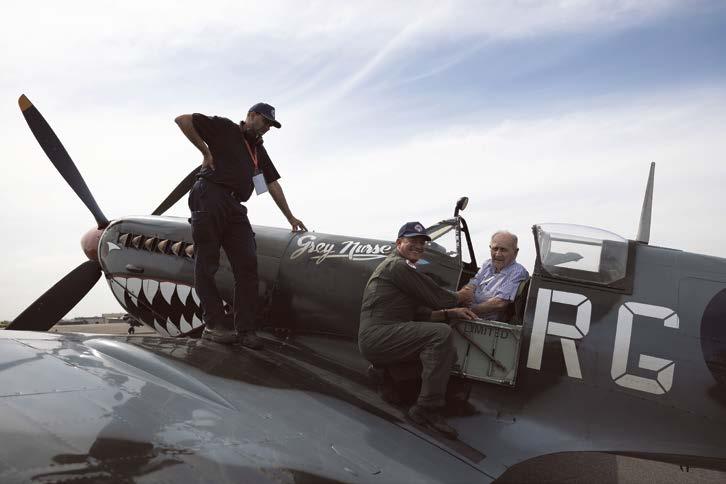
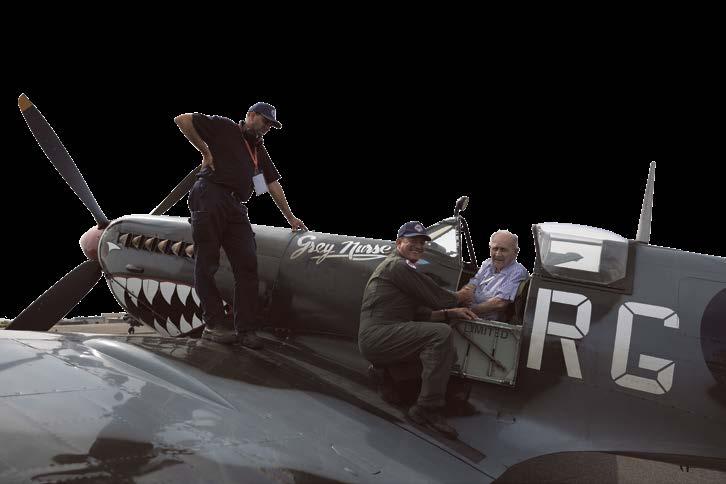
In June, personnel from Australia, Papua New Guinea, France, Japan, the United States and other international partners gathered in PNG for Operation Render Safe to reduce the threat of wartime ordnance remnants and connect with the people living among them.
Personnel from the explosive ordnance disposal team, Wallaby One, visited Sikut Matupit Primary School in Rabaul with international partners, engaging with students and teachers about the dangers of unexploded ordnance and the importance of staying safe around suspicious items.
‘The team spoke with local residents about the risks unexploded ordnance poses and how to report anything that looks suspicious,' said Captain Stephen Smith.
‘It’s not just about clearing remnants of war – it’s about building relationships within the local community. You can’t separate safety from community. If they trust us, they’ll talk to us – and that helps everyone. The more we can engage, the more confident people feel reporting something unusual.’
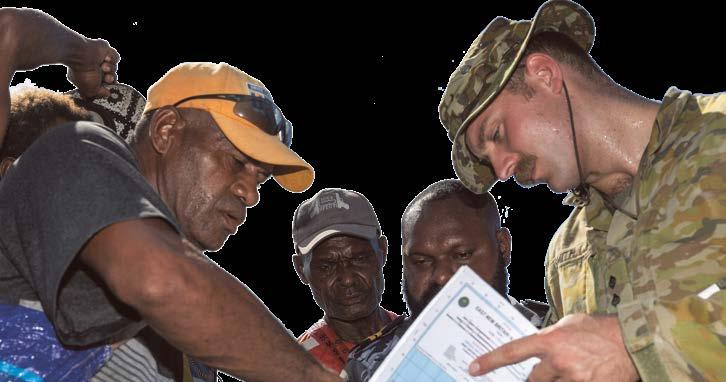
Major Ben Peterson, of 1st Armoured Regiment, said Australians were working alongside the UK Robotics and Autonomous Systems Battlegroup on hyper-teaming, one of the key technologies being experimented with, which tested human-machine integration in a field environment. ‘We’re getting one soldier to do something that previously took many soldiers. For example, a single controller using multiple
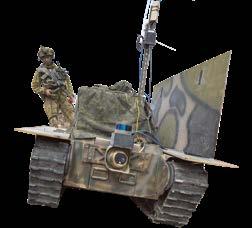
Covert technologies were also being put to the test in the Californian desert, such as a new radio system that has the potential to reshape the battlefield. The Australian-designed and built TrapRadio supports Australian soldiers through force protection and the use of artificial intelligence and machine learning. It is able to generate a deception to support commanders, mimicking high-value targets, which creates a dilemma for adversary operators.

On 7 April, Governor-General Sam Mostyn presented the Meritorious Unit Citation to the 1st Battalion, Royal Australian Regiment (1RAR) for outstanding professionalism and exemplary conduct during Operation Solace in Somalia. Over 17 weeks, the soldiers of 1RAR contended with extreme heat, gunfire exchanges with militia, and the humanitarian toll of civil war.
Besides the shock of human suffering, the soldiers also adapted from having trained mainly in jungle back home, to urban and town patrolling in Somalia. ‘But our training had been excellent and the fundamentals of soldiering and patrolling were still used, we just had to tweak it a bit,’ said former Corporal Terry Conner. ‘It wasn’t until you went out into the villages that you really saw they were definitely suffering. We treated people at checkpoints
who had been shot in
Children who’d been wounded playing with explosives.’
The Australian forces provided security for food distribution, confiscated weapons from Somali militia and hand-drew maps of the operating area to identify key locations and non-government organisation buildings. About 1,100 patrols were undertaken and more than 1,000 weapons seized from Somali fighters. Tragically, Lance-Corporal Shannon McAliney was killed by accidental fire while on patrol.


Veterans, their families and carers can now access free online mental health support, including those bereaved by suicide or experiencing suicidal distress, from anywhere in Australia.
Open Arms is proud to support the delivery of 2 new online programs designed specifically for veterans and veteran families. Shoulder to Shoulder online forums and Stronger we Stand online workshops ensure that support is available to the veteran community regardless of their location.
Both are part of a significant expansion of Open Arms’
digital mental health capabilities to support veterans, families and carers living in metropolitan, regional and remote areas throughout Australia.
The programs are open to anyone over 18 years of age and you do not have to be an Open Arms client to participate.
Open Arms’ Group Programs are designed to support current and former ADF members and their immediate families to overcome some of the unique challenges of military life.
They include:
• Beating the Blues (depression)
• Building Better Relationships (for couples)
• Managing Anger
• Managing Pain
• Parenting
• Recovery from Trauma
• Relaxation and Stress Management
• Sleeping Better
• Stepping Out (transition from the ADF)
• Understanding Anxiety.
These programs are delivered by mental health and lived experience professionals and are offered face-to-face with some online introductory options.
Free Online Support for Veteran Families and Carers
FreeOnlineSupport forVeteranFamilies



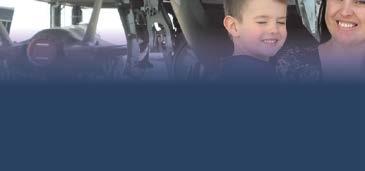
They are evidence-informed, strengths-based, solutions-focused, trauma informed, military-aware, and include the lived experience perspectives of veterans and families.















Empoweringveteranfamiliesandcarerstosupportlovedones throughsuicidedistressandbereavement.
HelpingYouSupportYourLoved OnesandYourself Connectwithservices, support,andacaring community. Gaintoolstosupporta familymemberexperiencing suicidaldistressorthose bereavedbysuicide. Learnstrategiestocarefor yourownmentalhealth.
Ledby: Compassionatefacilitators consistingofexperiencedPeer Workerswhodrawfromtheir ownlivedexperience,alongside qualifiedMentalHealth Clinicians(e.g.psychologists).

Open Arms has updated its Stepping Out program with more contemporary and user-friendly content thanks to feedback from clients.
FoundationalSeries: Seriesof3x90-minute sessionsonsupporting veteransexperiencingsuicidal distressorthosebereavedby suicide.
Foundational Series: Series of 3 x 90-minute sessions on supporting veterans experiencing suicidal distress or those bereaved by suicide
Parent-FocusedWorkshops: 1x3-hoursessionstailoredfor parents.
Parent-Focused Workshops 1 x 3-hour sessions tailored for parents
This program is designed to increase awareness of important personal and social adjustment factors and to support ADF members and partners as they are transitioning, or who have transitioned, from military to civilian life.




One-Off Sessions: 2-hour workshops on topics like stigma, advocacy, and PTSD
One-OffSessions: 2-hourworkshopsontopicslike stigma,advocacy,andPTSD. gphlinks.org/sws
ContactUs strongerwestand@gph.org.au 1800929101
It provides participants with the knowledge, skills and resources to further assist them in making a confident and successful transition to civilian life.
restrictions on when a veteran and their family can attend Stepping Out post separation from Defence. The program is delivered faceto-face over 2 days. It is generally co-facilitated by 2 Open Arms staff, a clinician and a lived experience professional who have a deep understanding of military life and its complexities, including the transition journey.

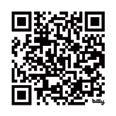
Stepping Out is a voluntary program available to veterans and partners at any point in their transition journey. There are no time
To find out more or register for Stepping Out or other group programs offered by Open Arms, visit www.openarms.gov.au
“It takes a village” is a proverb usually attributed to raising a child, but it can also apply to getting on top of your mental health. Army veteran Joel has leant on the support of Open Arms, other mental health professionals, family, friends and work colleagues to help him ‘adapt and overcome’.
Joel has had more than his fair share of physical and mental health battles.
As a person living with a permanent spinal cord injury, he is now committed to helping other veterans ‘take control of their own narrative’. Medically discharged in 2016, the combat veteran of 5 years who was deployed to Afghanistan sought help from Open Arms after reaching his ‘tipping point’.
‘I was having dark thoughts every day, crying in my car, self-medicating and not wanting to leave the house,’ Joel explains. ‘I knew something was off.’
After being hospitalised, he sought further help and slowly began to rediscover his identify and sense of purpose: ‘I got through this because of the help of so many others, including my wife and 2 daughters.
‘I am now studying for a psychology degree so I can help fellow veterans and their families cope with the highs and lows of life post-service.
‘If you can shift your perspective, your narrative will change, and so too your outcome. We can all adapt and overcome.’
Brisbane Jackals Captain Troy lost his way after his best mate took his own life.
The current serving Army Troop Sergeant from 17 Construction Squadron, 6 Engineer Support Unit, was devastated by the loss of his friend and fellow combat soldier.
‘We had experienced the same things together and I felt myself going down the same path,’ says Troy. ‘A psychologist asked me if I had a hobby – which I didn’t. I played sport all my life and decided to get back into it.'
Troy’s decision led him to the Brisbane Veterans Rugby League Football Club, which he says has changed his life for the better: ‘It’s been life saving for me – the club has created something pretty special. It’s amazing to have an opportunity like this at the age of 37.’
Named as the team’s Captain in the recent Vegas 9s tournament charity match in Bellingen and the Anzac Day game, Troy is also very thankful for the ongoing support from his wife Jacinta and his chain of command from 6ESR.
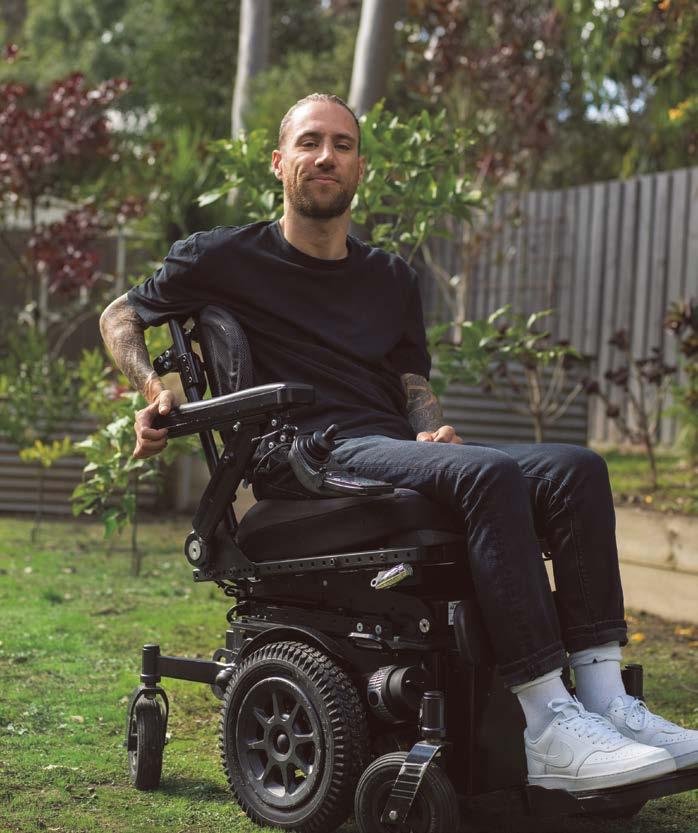
'They are very supportive of my mental health. It’s important to be part of a community outside of Defence but still have those shared experiences. A lot of my mates who have left struggled with that loss of community.'
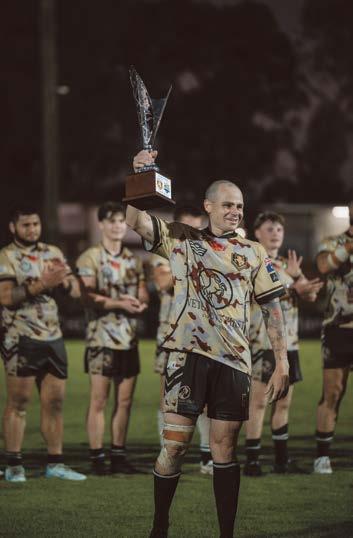
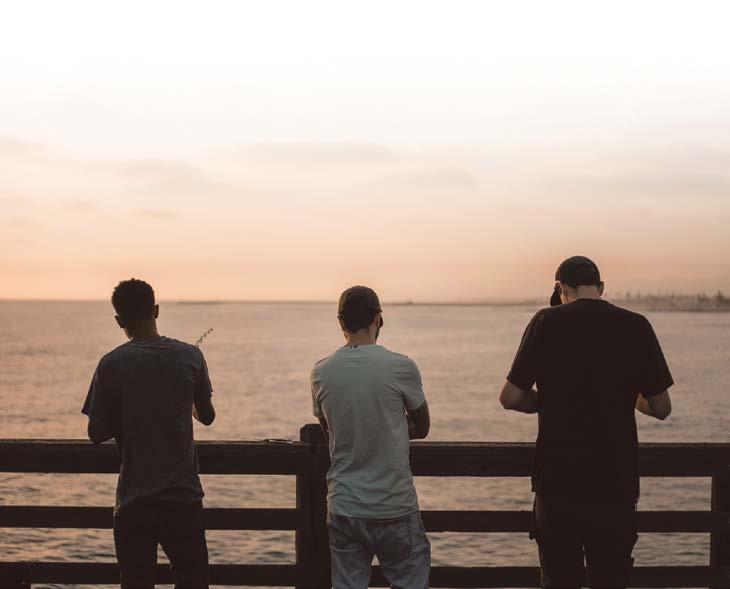

Looking for a role in civilian employment? Want an employer who values and understands veterans? The Veteran Employment Program (VEP) can help.
More than 400 organisations have joined the VEP’s Veteran Employment Commitment (VEC) – a growing network of employers who have demonstrated workplace policies and practices that support veteran employment.
As a veteran, your skills, experience and attributes are highly valued by, and transferrable to, civilian employers.
Visit the VEP website to search the VEC employer database and discover the range of opportunities that exist. You can filter potential employers by organisation size, location (state and region), industries they work in and types of veteran employment practices they have in place – such as employment programs, employee groups or on-boarding tailored to veterans.
For instance, are you looking for roles in education and training? You can find more than 50 organisations in the database. Thinking about moving to Western Australia? Consider over 100 veteran-friendly employers located there. Do you value mentoring support at work? Discover almost 70 organisations that can assist you.
The move from military service to civilian life is a significant event and a time when veterans might pursue higher education to support their career opportunities.
ADF members gain highly transferable skills during their service. These include strong leadership, teamwork, technical proficiency and problem-solving abilities. However, higher education providers do not always readily recognise these skills.
To counter this, the Australian Government’s Veteran Employment Program (VEP) promotes the value of veteran skills and experiences through initiatives such as the Veteran Recognition of Prior Learning (RPL) – Tertiary Support Grant Program.
The RPL Grant Program is providing $1.65 million over three rounds to support Australian
If you are a veteran’s partner looking for employment, use the website search function and select the box to search organisations that ‘employ partners of serving and ex-serving ADF members’. A range of information and links to resources for partners is also available on the VEP website.
To search for organisations that have joined the VEC, go to the ‘For Veterans’ page and click ‘Find veteran-friendly employers’. For more information, visit www.veteransemployment.gov.au
Employers – are you looking to attract veteran talent? Then join the growing list of organisations supporting veterans and partners. The VEP can provide you with practical advice and tools on how to recruit veterans to your organisation.
If you are already supporting veterans, you are invited to join the VEC. Depending on the number and type of veteran employment activities you are actively undertaking, you may be recognised as a Veteran Employment Supporter, Veteran Friendly Employer or Veteran Employer of Choice.
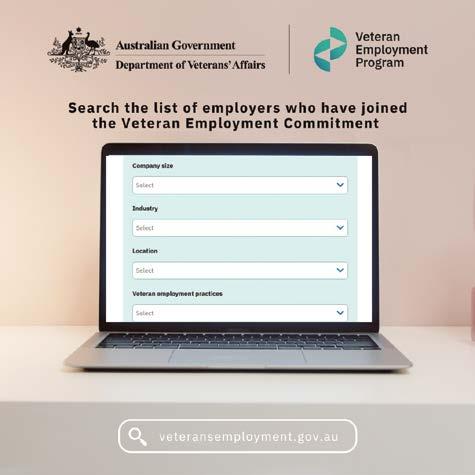
higher education facilities, including universities, in adapting tertiary credit-mapping frameworks and creating entry pathways for veterans. The funding aims to increase opportunities for veterans to have their ADF skills and experience formally assessed and credited towards civilian qualifications, thereby supporting their job opportunities in the civilian workforce.
As part of round 1, higher education facility recipients have used the RPL grants in several ways. For example:
• the University of NSW developed a dedicated veteran portal, offering coaching and enhanced RPL processes (www.unsw.edu.au/veterans)
• the Australian Catholic University created a comprehensive online guide and website for RPL in tertiary institutions (www.acu.edu.au/ about-acu/veterans/student-veteran-services)
• Flinders University, partnering with the University of the Sunshine Coast, mapped ADF skills to university courses, creating pathways for advanced standing
• the University of Canberra implemented a “virtual front door” website for veteran support, automatic credit for selected courses, and a registration process for veteran-specific benefits. Visit: www.canberra.edu.au/future-students/ get-into-uc/admissions-programs/vtsp/support
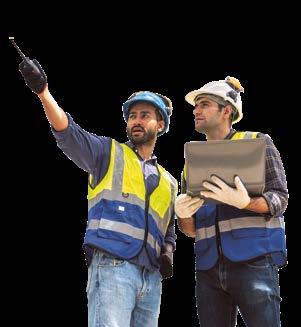

These activities are empowering veterans’ futures. They support higher education and training for veterans seeking roles in the civilian workforce by allowing them to gain formal qualifications and be more competitive in the labour market.
Round 3 of the RPL Grant Program is expected to open later in 2025. For more information on the Program and other grant programs, or to receive notifications of future grant opportunities, visit the GrantConnect home page: www. grants.gov.au.
For more information on the Veteran Employment Program, visit www.veteransemployment. gov.au
DVA is proud to congratulate the 24 participants who completed the 2024 VetPaths program.
VetPaths is a support pathway for veterans new to the Australian Public Service (APS), which highlights employment opportunities and provides a structured support system once they are employed. It supports veterans by ensuring they have access to resources and connections that promote career readiness, personal development, and wellbeing.
VetPaths began as a pilot career pathway in 2022 to support veterans with transitioning into public sector careers with the APS. Since then, 38 participants have navigated the APS landscape, receiving career mentoring, tailored learning and development opportunities and invaluable peer support.
As part of their final learning and development activity, the 2024 participants undertook a course in ‘Coaching and Developing Others’, an engaging and practical workshop designed to strengthen core APS leadership capabilities. The course equipped participants with tools to better support team performance, foster engagement and apply coaching techniques to enhance development conversations.
A "finalisation event" brought together program participants, agency representatives and senior leaders to honour the progress made, share experiences and strengthen the community of veterans working across government.
Participants were able to reflect on the courage it takes to step into a new chapter, and for
Whether you are serving, transitioning, or have separated from the ADF, Veteran Support Officers (VSOs) are strengthening support across the veteran community through faceto-face appointments, presentations, and partnerships with Defence and ex-service organisation (ESO) networks.
DVA is continuing its efforts to support current and former serving members through its VSOs.
VSOs are DVA staff members embedded on-base who provide personalised support and information to veterans and their families. While often associated with veterans preparing to leave the military for civilian life, the role of a VSO extends much further – offering guidance and education to serving members.
VSOs also provide support to ex-serving veterans and their families through a limited number of Veterans’ and Families’ Hubs.

DVA and participating APS agencies to highlight the great contribution veterans continue to make as public servants.
For participants, the event marked the completion of one journey and the start of another. It was more than a celebration: it was a powerful reminder of what is possible when veterans are empowered to continue their service in new and meaningful ways.
DVA looks forward to continuing to support the growth of veterans within the APS, ensuring the values, skills and leadership expertise developed over their military career can continue to benefit all Australians.
To learn more about VetPaths, visit the DVA website (search for ‘Continuing to Serve: VetPaths‘).
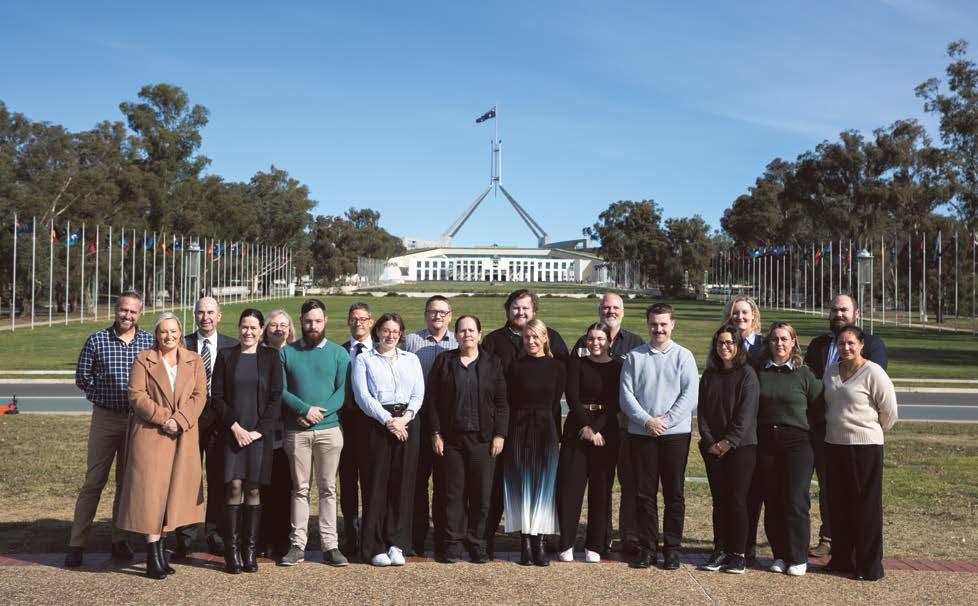
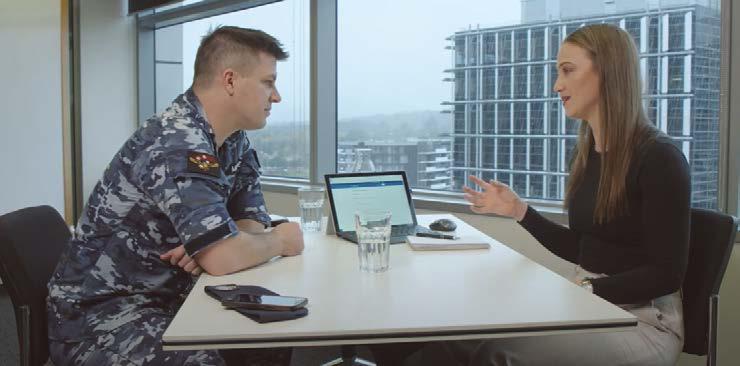
In addition to one-on-one appointments, VSOs provide information sessions, unit briefings and community presentations to increase awareness of DVA services and entitlements. Topics typically include how to access MyService, the claims process, and how to access DVA supports and benefits. These sessions aim to strengthen understanding and engagement across all stages of military life. VSOs work closely with command teams, ESOs, and local networks to ensure services are responsive to emerging needs and remain accessible to veterans from all walks of life.
Veterans are encouraged to bring along family members or support persons to appointments, recognising the important role they play both during service and in post-service life.

The VSO program reflects a broader strategy to make DVA support services more visible, more approachable, and better tailored to individual needs. By fostering early and informed engagement, VSOs aim to reduce complexity and improve long-term outcomes for veterans and their families.
For more information or to contact your local Veteran Support Officer visit the ‘Veteran Support Office’ page on the DVA website

An innovative jobs platform supported by DVA is helping veterans and their partners find meaningful, flexible and secure careers. Here’s how it works. A message from Future Women (FW) Jobs Academy
For the first time in over a decade, Army veteran Anita Price wasn’t sure what she would do next. During time away from home, she finally had the space and time to reflect on her career of 11 years.
Anita had signed up to join the Australian Army when she was still a teenager and quickly became a commissioned officer. During her time in the ADF, she achieved more than she could have imagined, describing her time serving as ‘a very big, fast career.’
‘I had a lot of goals and dreams, and I ended up achieving them early,’ she says. ‘[For a decade] it was a mix of deployment, sea time, field time … I was never really in one geographical location.’
Some of Anita’s career highlights included being trusted to lead a company of 150 soldiers when she was only 25 years old and serving as a general’s aide in the Golan Heights. But after a decade, Anita was ready for a new chapter. She needed change – she just didn’t know what that change would look like.
‘I’ve been working really hard to come to terms with who I am outside of the military,’ Anita says.
Jobs Academy is a nation-wide program designed to support women to find meaningful, secure and flexible jobs. Participants gain access to a suite of resources, workshops and development opportunities throughout a year-long program that is completely free, virtual and selfpaced. Since launching in 2021, Jobs Academy has helped thousands of women return to work or study – and thrive.
At the start of this year, Jobs Academy launched a new intake supported by DVA, that targets women and gender diverse people who had served in the ADF, as well as their partners.
Anita, who has only been in the program for a matter of months, describes it as a ‘fantastic initiative … I’m so glad to be part of it’. She’s found the Jobs Academy community particularly supportive while she is overseas and far from home: ‘[Talking] and hearing other people’s stories is definitely the part that does it for me.’
Not dissimilar to Anita, Isabel*, who joined the ADF in the late 1990s, struggled to make the transition back to civilian life after being medically
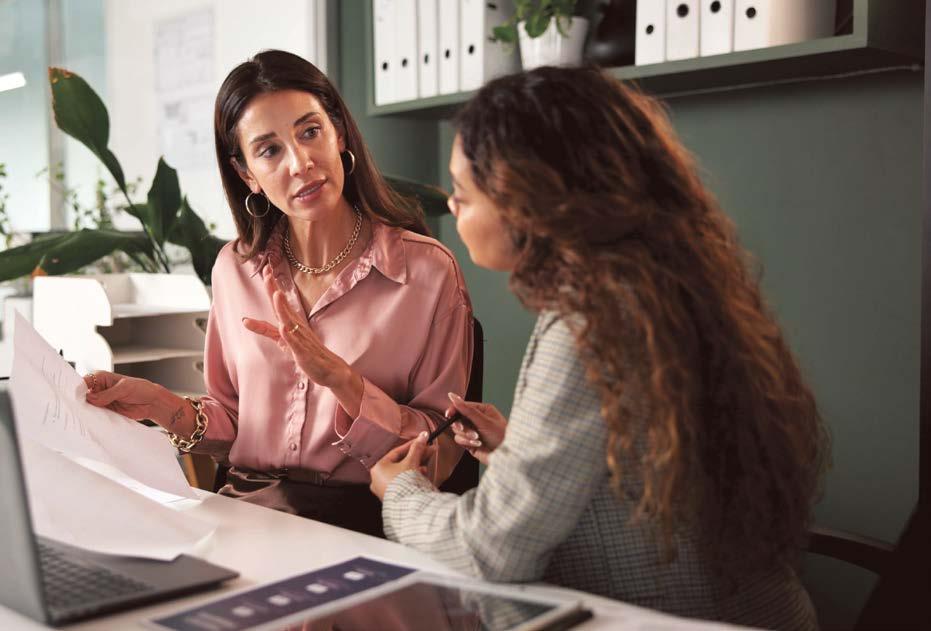
Isabel recalls. ‘I just thought, well … I’m going to be [out of paid work] for the rest of my life.’
For many years, Isabel chose to volunteer. She describes this work as having ‘kept me going … because it’s given me a purpose’. But she also wanted more of a change and was ready to find paid work – she just did not know how to make that change happen.
At this point, while considering what to do next, Isabel came across Jobs Academy much like Anita had. She was accepted into Jobs Academy and was struck by the depth and breadth of its offering.
Three months after starting Jobs Academy, Isabel received a scholarship to study a Diploma of Mental Health at TAFE. She would not have applied for this scholarship if she hadn’t joined Jobs Academy: ‘And now I’m quite excited thinking [that] by the time I’m just short of 50, I’m going to be graduating with a diploma, which I never thought I’d do. I didn’t even finish high school!’ Jobs Academy is an FW initiative supported by DVA. It’s a free, fully virtual program designed to boost women’s workforce participation



Three ambassadors for veteran employment explain why hiring ex-service people is a win for both sides.
Veterans bring a range of skills that can benefit any employer or industry, such as leadership, teamwork, agility and the ability to work under pressure. The ADF is an incredible training ground, but when they leave the military, some people experience challenges promoting the skills they gained when applying for civilian jobs.
Appearing on ABC News Breakfast as part of a national veteran employment campaign, Repatriation Commissioner and retired Brigadier Kahlil Fegan DSC AM, highlighted the valuable skills veterans bring to the workforce and how employers can support them and benefit from their skillsets and experience.
‘Each of our veterans that are serving have particular skillsets that they become absolute experts in… there’s also these values that are inculcated in our defence men and women,’ Kahlil said. ‘Respect, having integrity, having courage, seeking excellence in everything you do and loyalty… those values actually mean something.
‘When they leave the military, they don’t hand those back into the Q Store on the way out, they come with them and they’re the particular attributes or values that they can then apply to a new environment if they get the chance.’
ABC News weatherman, Nate Byrne, was in the Navy for 12 years before applying, with some trepidation, for a job with the national television network. ‘I hadn’t written a CV in over a decade,’ Nate told Channel 9’s Today program, ‘let alone applied for a job. I never thought I was going to leave defence. Meteorology and oceanography in the Navy – I absolutely loved it. But then I took a year off to go and do science communication, outreach, and then I found a new love.
‘In the military, the jobs require very specific skills, for which you are trained. I didn’t realise that in the civilian world, there’s a lot more flexibility – you can define jobs and your skills differently.’
Nate has some emphatic advice for employers in support of his fellow veterans:
‘When you are hiring a veteran, you’re not just getting a person to do a job, you’re getting a person that comes with a complete life experience, almost regardless of how long they spent in Defence. So you get people with skills they don’t even know they have – the ability to put up with a heck of a lot. You’re kind of getting in somebody who’s just possibly the best version of what you want, ready to go.
‘So if you’re hiring somebody who’s spent 6 years in the ADF, you are actually hiring the equivalent of somebody on the outside who has probably worked for 10 or 15 years in another job. Because they’d at least worked 3, maybe 4 jobs in that time and been put in roles that need them to be more mature, more experienced, also more sensi tive than you might otherwise have had in an equivalent time in the civilian world. So what you’re actually get ting is bang for your buck.’
Former Army officer Tom Nhan Tri Nguyen is the only child of migrants who were fled war-torn Vietnam. Now a freelance strategic management consultant, Tom earned a Master of Business Administration and worked for companies such as McKinsey, Telstra and Salesforce. But he credits the Army for the foundational skillset that gives him the edge in answering the ‘big, often neb ulous, strategic questions for which there is no set formula.’
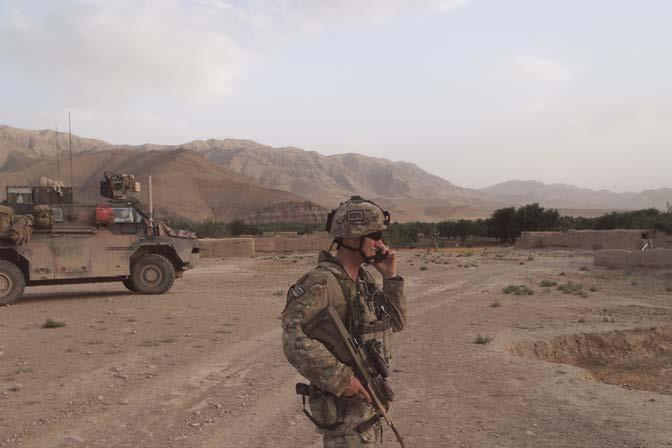
‘I think there’s a number of qualities that I’ve taken from the Army that have really put me in good stead in civilian life,’ Tom said. ‘The first is resilience to stress – the sort of train ing that you get in the Army really pushes you to the limit in terms of physical mental and social stress. The second is to do with people leader ship. I think people leadership training exists in the corporate world – but it’s nowhere near as intentional as it was in the Army – and that’s really allowed me to lead and energise teams in business life in a differentiated way.
‘Finally, I’d say just the sense of service that that my time with the Army has given me is really something that I’ve taken away, and it’s stayed with me. I’ve remained, for example, in Surf Life Saving since leaving the Army, and that’s effectively become my Army Reserve surrogate.’
The veteran employment campaign ran from April 2024 and included newspaper, magazine, radio and tel evision advertising. Its online videos garnered almost 180 million views – 3 times the number expected. Even though the campaign has come to a close DVA continues to spruik the great qualities veterans bring to the civilian workforce through the Vet eran Employment Program. Organisations can get involved by joining the
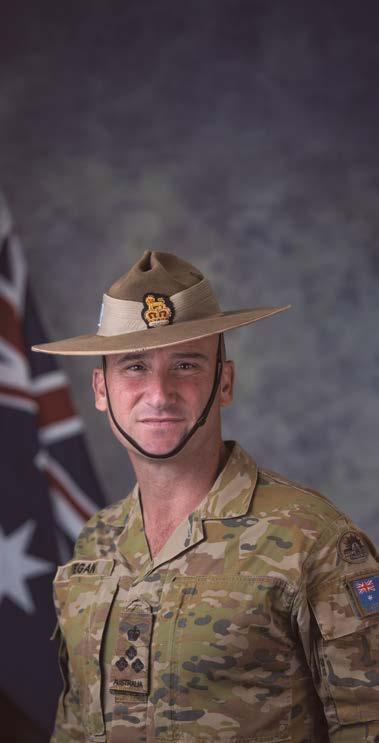
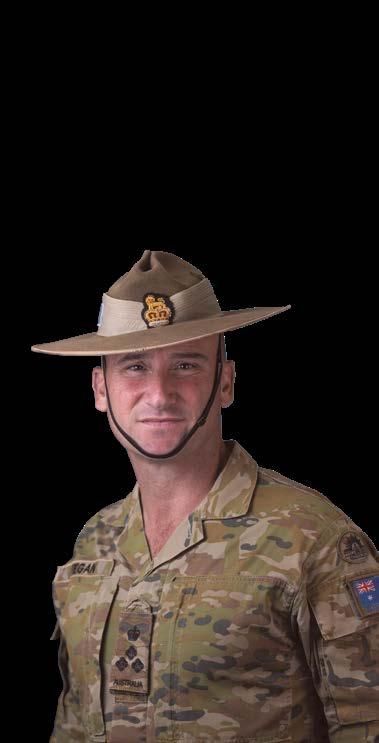
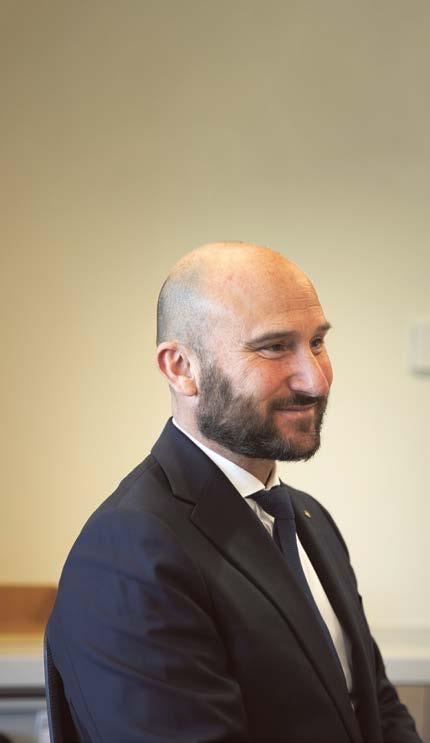
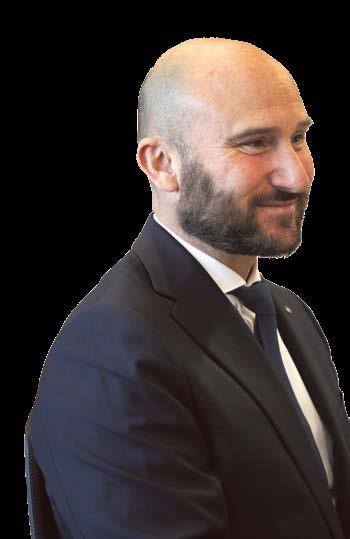

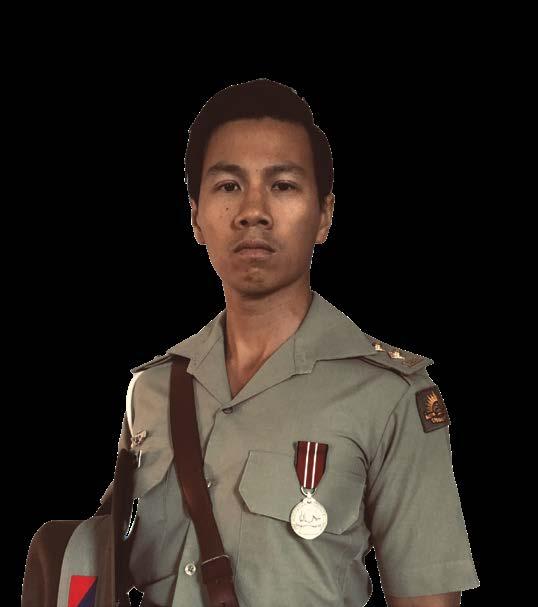
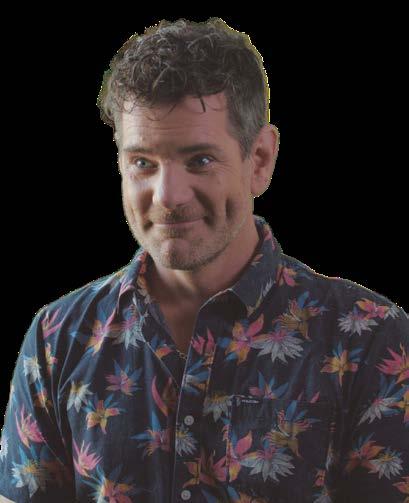
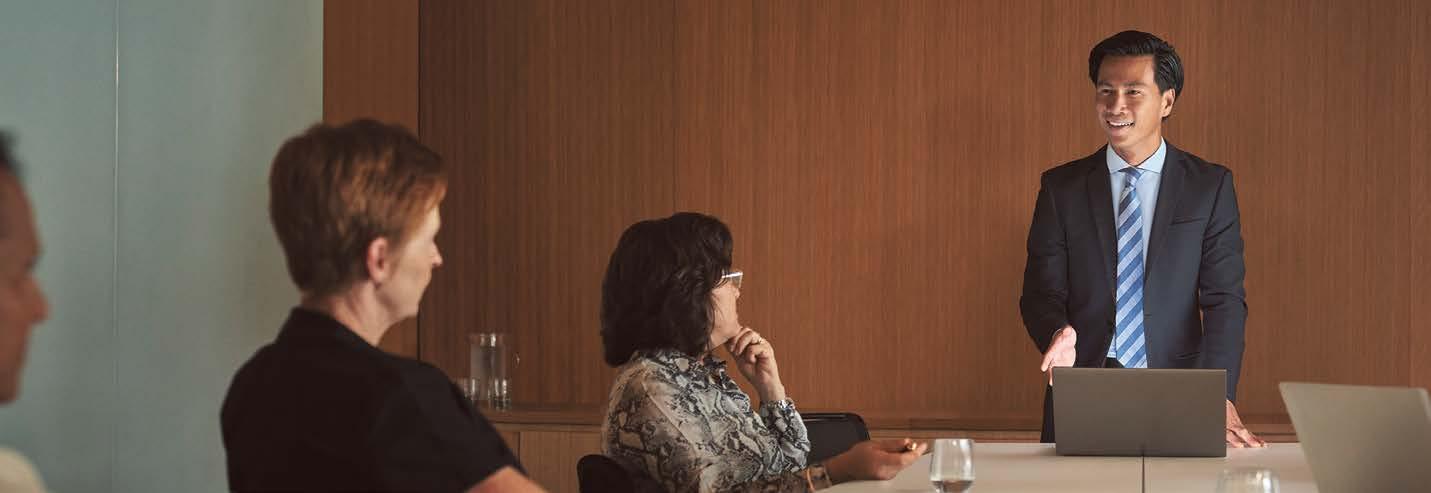
During the height of the COVID-19 pandemic 2 entrepreneurial veterans, Peter Liston and Matt Moseley, founded the Veteran Community Business Chamber to raise the profile of veteran-owned businesses across Australia.
Five years and a rebrand later, the Veteran Business Community (VBC) is as committed as ever to supporting veterans and their families on their journey to self-employment through entrepreneurship.
‘Our goal is to see veteran entrepreneurship become an established transition pathway from the military,’ Peter says.
Military service equips veterans with many skills and attributes that are directly transferrable to successful business ownership.
‘Veterans have strong skills in leadership, organisation and operations – being able to project manage, forecast and look at risk. When we are looking at soft skills, it’s the drive, determination, the problem-solving, the persistence and courage,’ Peter says. ‘However, there are some significant knowledge gaps, and those gaps are sales and marketing, cashflow and accounting.
‘VBC steps in to support those gaps, helping people to understand branding and marketing, lead capture and lead generation. How to
actually sell. Then it will go back to their strengths of operational delivery.’
To support veteran entrepreneurs, VBC offers quarterly business bootcamps, mentorship and networking opportunities.
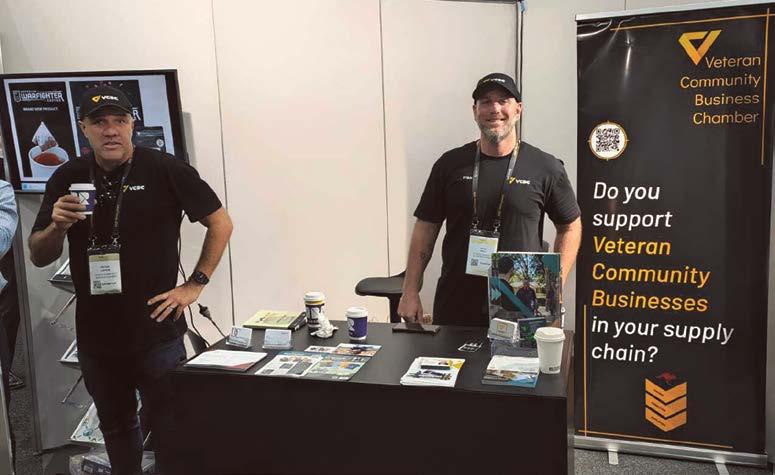
Peter has also started up a podcast, Military Mind for Business , where he’s joined by other veterans to discuss what it takes to build a successful business.
VBC is working hard to promote ‘buying veteran’ by introducing veteran-owned businesses into major industry supply chains.
They’ve secured a new partnership with Gateway by ICN to spotlight veteran-owned businesses on its platform. The Gateway connects small-to-medium enterprises to major projects and will offer greater access to largescale corporate and government contracts. When signing up with VBC, member businesses undergo a formal registration process to identify as ‘veteran owned.’
‘Supporting veteran-owned businesses and putting veteran-owned business in your supply chain is about the quality and character and commitment of the people behind the business,’ Peter emphasises.
‘We don’t believe in preferential treatment, but we believe a veteran’s service should be a point of difference.’
In just one of many success stories, VBC connected community member Frontline Australia with a large facility management company.
‘The facilities company said to us that they wanted to put a veteran-owned business into their supply chain,’ Peter explains. ‘We connected them with Frontline Australia, who secured a multi-year, multi-million dollar contract for integrated facility management services.’
If you’re a veteran looking to take your business to the next level, or just curious about whether a career in business could be for you, VBC is helping to organise a veteran business exhibition in Brisbane on 9 September 2025. The event is a networking and professional development opportunity, and attendees will have the chance to meet and hear from a panel of industry experts. To learn more about VBC and the upcoming exhibition, visit www.veteranbc.com
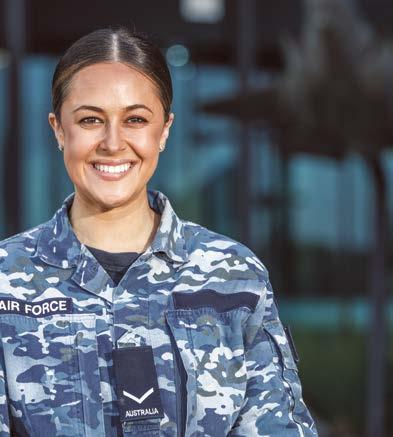
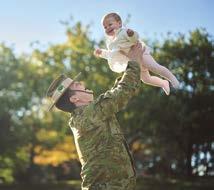
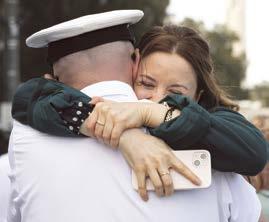
The Department of Defence has launched a free mobile app designed to support ADF personnel and families as they navigate their transition to civilian life.
The ADF Transition Guide app, developed by the Joint Transition Authority, brings together the most up-to-date transition resources from Defence, DVA and the broader transition support system.
These resources guide personnel and families through
every step of the transition journey, helping them to prepare with confidence, find meaningful support, and make informed decisions about their next steps.
The app was created with the understanding that each transition journey is unique, and that support needs may change based on individual circumstances, and at what point in the transition journey someone is.
Whether you’re considering transition, supporting someone through theirs, or wanting to stay informed about transition requirements and available support services, then the ADF Transition Guide is for you.
Take the first step on your transition journey. Download the app from the Apple Store or Google Play today.

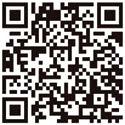
This year, for the first time volunteers from the veteran community contributed to DVA’s Anzac Day commemorative services in Türkiye and France. We spoke with some of them after they returned home.
Kerri-Lee Beck, a RAAF veteran who’s the fifth generation of her family to serve in the Australian military, is currently a Reservist and is married to a serving member of the ADF. Kerri-Lee’s role at Gallipoli was with the Ceremonial team.
‘There was a strong sense of shared purpose – everyone understood the importance of the role they played,’ she says. ‘Whether placing wreaths, guiding guests, or setting the tone for the services, every task carried meaning.
‘Being surrounded by Australians and New Zealanders, united in remembrance, created a quiet but powerful sense of shared pride. The beauty of the morning stood in poignant contrast to the tragic history it commemorated. It was deeply moving.’
She also read an ANZAC’s diary entry during the Anzac Cove service in front of 2,500 attendees.
‘Speaking Hector’s words – on the very ground where he once stood –was an absolute privilege.’
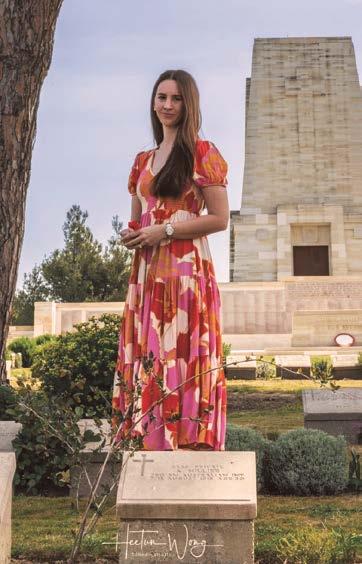
Shane Moy, a former Signaller and Commando who was deployed to Bougainville, Solomon Islands, Timor-Leste, Iraq and Afghanistan twice, also attended Gallipoli.
The moment that stood out for him was during the Lone Pine Service as he lay a wreath alongside another veteran on behalf of all Australian veterans: ‘[I felt] very grateful and blessed being able to do that. [I’ve] had some great experiences participating in past Anzac Day services as a soldier, but that will probably top them.’

Bernadine Bennett supported the services in France. She is the widow of a RAAF veteran, and a musician with the Townsville RSL Pipes and Drums band, playing at Anzac Day marches and services.
‘My role involved greeting visitors, making them feel welcome, and ensuring that everyone who visited had a memorable experience,’ Bernardine said.
‘Attending the services felt absolutely special. The atmosphere was deeply moving, and the sense of camaraderie and shared respect for the sacrifices made by the diggers and their families was palpable.

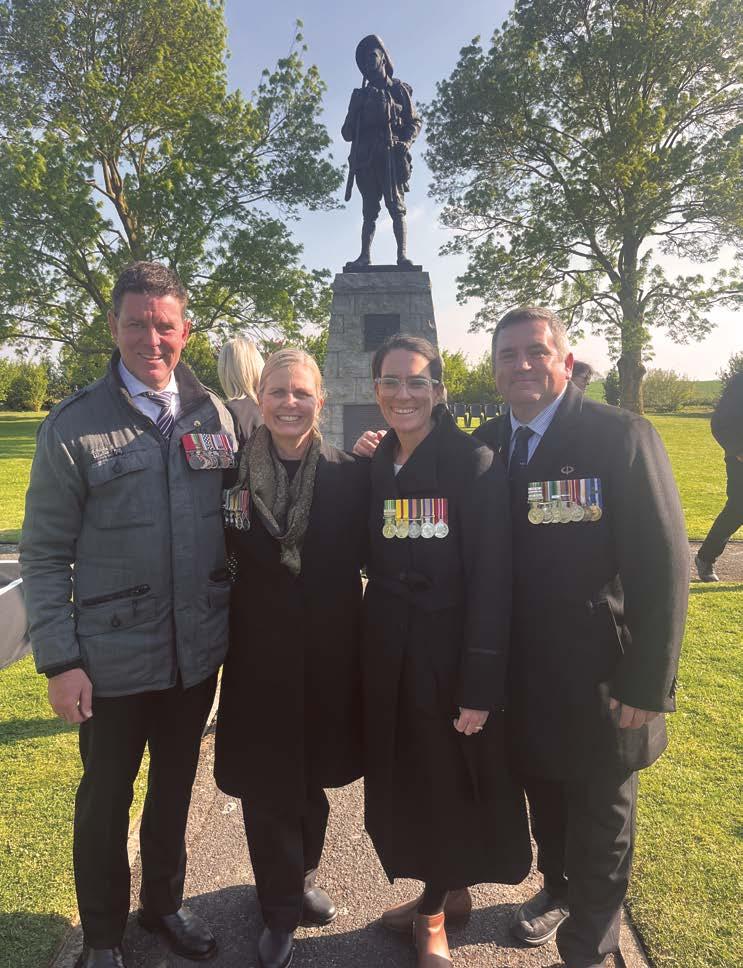
‘On Anzac Day, my thoughts gravitated foremost towards my husband. However, spending time in France and being part of the commemorations made it impossible not to reflect on the immense suffering endured by the diggers and their families.’
Also in the Visitor Services team was Matt Lamberth, a RAAF veteran. Matt has followed in the footsteps of his grandfather, who served in the Second World War and his uncle, a Vietnam veteran.
‘I felt really honoured to be selected, with Bernadine, to lay a wreath on behalf of veterans and veterans’ families at the Dawn Service and share the reading of ‘In Flanders Fields’ at the Digger Service,’ Matt said. ‘The services had the same emotional context as they do in Australia, but I was really overwhelmed by how the French in the area embrace Anzac Day.’
‘I will continue to be in awe of the way our Government continues to appropriately honour our war dead. This experience has shown me how many people care about veterans.’
Army veteran Troy Simmonds also volunteered in France. Troy
had a varied career in the ADF, deploying overseas on many occasions. He was a member of the SAS. He told us that his memories of taking part in the Anzac Day services in France will stay with him for life, and that he felt valued as a veteran.
‘I was with the Ceremonial team that helped put together the actual service and coordinate the many different elements that enabled it to run smoothly,’ said Troy.
‘I felt privileged to be able to attend such a special event in such a sacred place. (I also felt quite tired, as we worked long hours leading up to the event).
‘I thought a lot about the World War One diggers and their families. The staggering human cost of that war. How awesome it is that we still remember them in such a meaningful and enduring way. I also thought about colleagues and friends I lost ... while I was serving in the Army.’
To all of the men and women who helped DVA with these events, thank you. And thank you for your service.
The Veterans Dive Initiative is encouraging former and serving personnel – and their kids – to take the plunge.
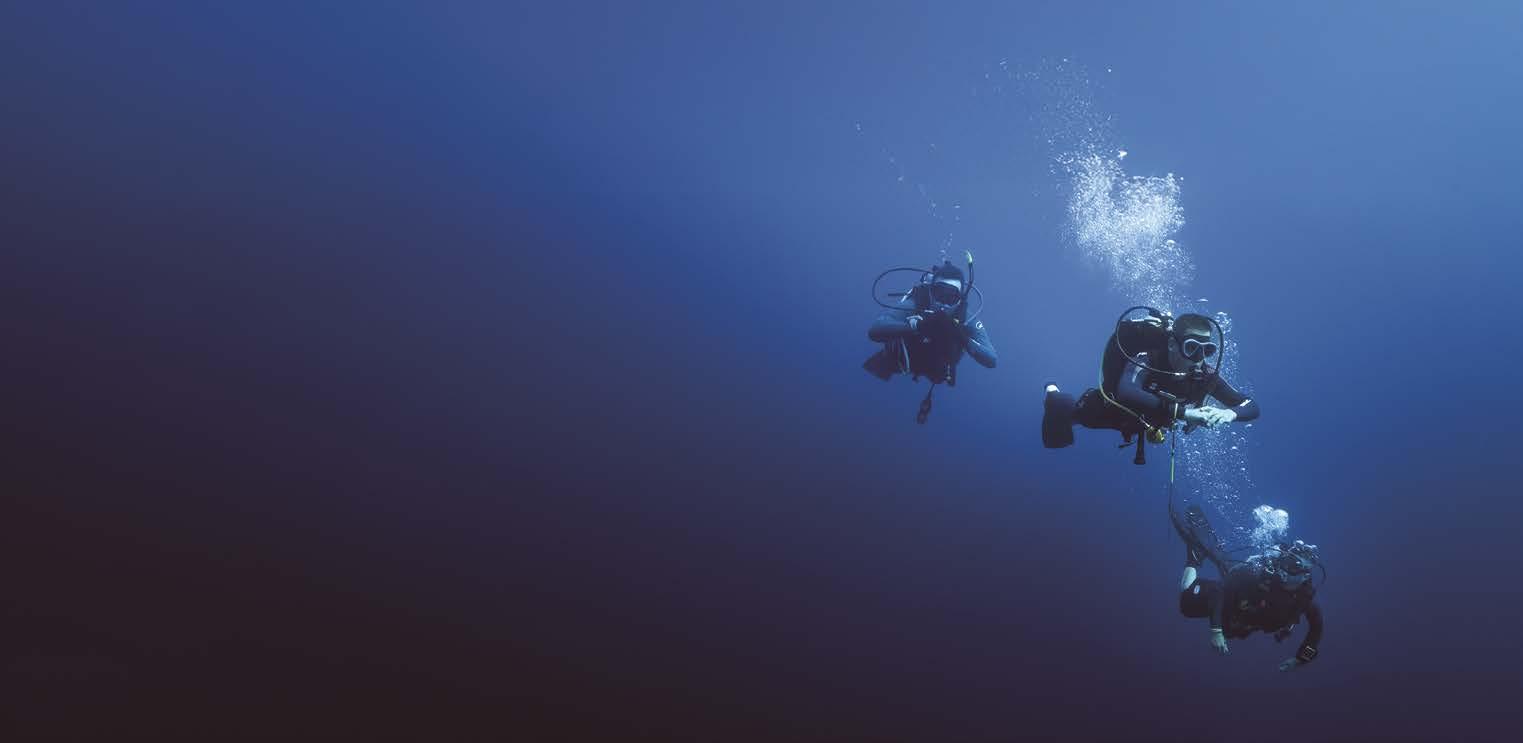
By the time retired Major Tim Prier transitioned out of the Australian Army, his body had fallen to pieces – joints, shoulders, knees, back – ‘all buggered’. ‘In 5 years I went from running marathons to chronic pain and now walking with a stick,’ Tim says. His operational experience with the British Army in Bosnia, Iraq, Afghanistan and Northern Ireland had taken a heavy toll.
But Tim found an alternative to powerful, addictive pain killers: ‘I get great pain relief from diving – as soon as I enter the water, the pain disappears. All the weight is lifted off my body, the tinnitus disappears too – it’s amazing.’
Even before he separated from the Army 2 years ago, the qualified Dive Master was spreading the gospel of deep water in the ranks. ‘The huge mental health benefits of diving have been proved in many studies,’ Tim explains. ‘It focuses your mind, you forget about whatever is going on in your world because you are so focused on what you’re doing.
‘While I was still serving, I took advantage of my position and used that to drive adventure training [diving and sky diving] within the unit,’ Tim says. Courses and dive days followed, and soon diving was the talk of the 1st Armoured Regiment.
Upon becoming a civilian, and with his former regiment dispersed, Tim turned his attention to ex-serving members and founded the Veterans Dive Initiative. Once a month, the Initiative runs a Veteran Dive Day. The South Australian branch of Invictus Australia has come on board to handle promotion, PR and finances. ‘And everything we do is made possible through the incredible generosity of Lissi Whyte, owner of Adelaide Scuba,’ Tim adds emphatically.
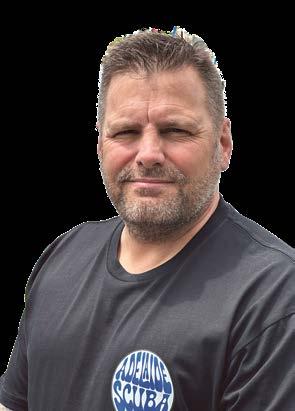
When 2 boats are in use, a dive day involves up to 27 qualified participants diving twice. All the equipment hire, the boats and instruction are free, courtesy of Adelaide Scuba [Self-Contained Underwater Breathing Apparatus]. The veterans are only asked for a donation of $40 to contribute to the costs of the online learning and certification for future training opportunities.
In May, the Initiative took 8 young children of serving and ex-serving ADF members through an open water diving course. ‘Too often, the children of veterans are overlooked despite being deeply impacted by their parents’ service,’ Tim reflects. ‘Having lived both as a child of a serviceman and later as a veteran parent myself, I’ve seen first-hand how military life – long separations, missed milestones, disrupted routines – affects the whole family.’
For Elizabeth Kogler, whose parents are serving members, the opportunity came unexpectedly. ‘My mum saw the course advertised on Facebook and signed me up,’ Elizabeth said. ‘I didn’t think I’d ever actually be able to Scuba dive, but when this came up, I thought it’d be a really cool experience.’
The course kicked off with a full day of theory and pool training. Elizabeth admitted the e-learning component was challenging: ‘The e-learning was a bit difficult because there was a lot of reading, but the physical training was really good.’
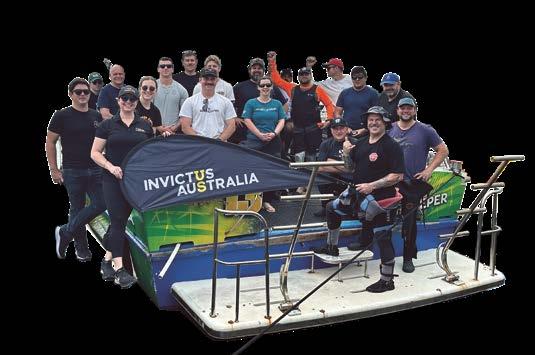
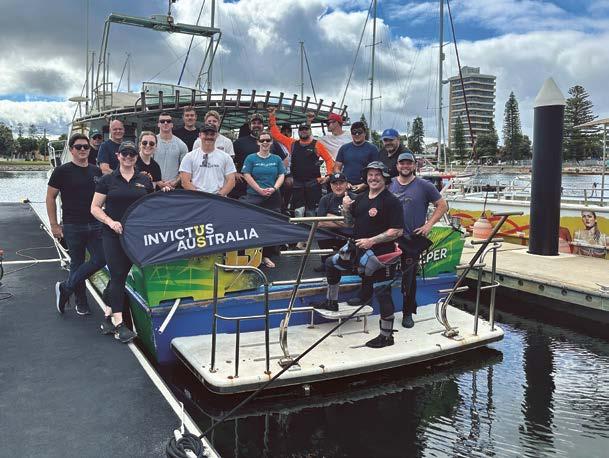
At Port Noarlunga Jetty conditions were tough, but the young divers adapted quickly. ‘It was weird at first, because when I’d go underwater I’d think, “I need to go up and get air”, but you get used to it,’ Elizabeth said.
The final day was a test of endurance during a rough-seas boat dive, but the team’s resilience shone through and all the students – except a couple with ear issues – successfully became certified PADI (Professional Association of Diving Instructors) open water divers.
Planning is now under way for a parent-child course: ‘The idea being to give parents who’ve returned from operations an opportunity to form that connection by training them together, so that they can dive together in future,’ says Tim.
The Veteran Dive Initiative is preparing the very first veterans’ course for those interested in learning how to dive and gaining their PADI qualification, and greater plans are afoot. The team is looking at expanding interstate and developing a tailored course for veterans with a disability.
But Tim’s ultimate aim is to give fellow veterans the chance to connect while having fun:
‘There are so many veterans out there who are isolated and on their own. And there are organisations who say to them: “come and talk about your problems”. But there are a lot of veterans who just don’t want to do that. However, if you give them an activity such as this, that’s maybe when they’ll start to open up, because they’re not under pressure to talk – because they’re here for the diving.’
For information about upcoming dive days, visit the Invictus Australia – South Australia Facebook group. Some material used in this article is courtesy of the Department of Defence.
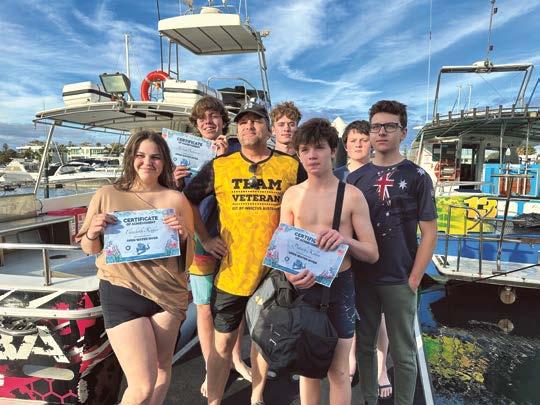

COMMISSIONER GWEN CHERNE
Family Advocate
As I prepare to end my 5-year tenure as Commissioner, now more than ever I know this role has never been just a job. It has been my ‘ikigai’ – my reason for being.
It brought together what I love, what I’m good at, what the world needs, and what I’ve been fortunate to be paid for. It has been a fusion of purpose and passion in equal measure. It has tested me, taught me, and rooted me in service.
A mindset of listening deeply before acting has guided me throughout my time as the inaugural Veteran Family Advocate Commissioner. It’s shaped how I approached every roundtable, meeting and heartfelt conversation with a widow, a child, a carer, a veteran, or a parent.
Because enduring change doesn’t come from having all the answers – it comes from asking better questions. And then asking more.
If I had an hour to solve a problem, I’d spend 55 minutes thinking about the problem and five minutes thinking about solutions.
or tenure, but by curiosity, compassion, and the courage to ask questions before offering answers. Leadership, to me, has never been about rank or status. It’s about humility – holding a mirror to ourselves and seeing clearly, without ego, both our strengths and our blind spots. It’s about recognising the wisdom in others, the gaps in our systems, and the quiet resilience woven through the stories people carry.
True leadership is not about being the loudest voice in the room. It’s about creating space for others to speak. It’s about discernment over dominance, elevating those around you, holding space for difference, and showing up not just with passion – but with teachability.
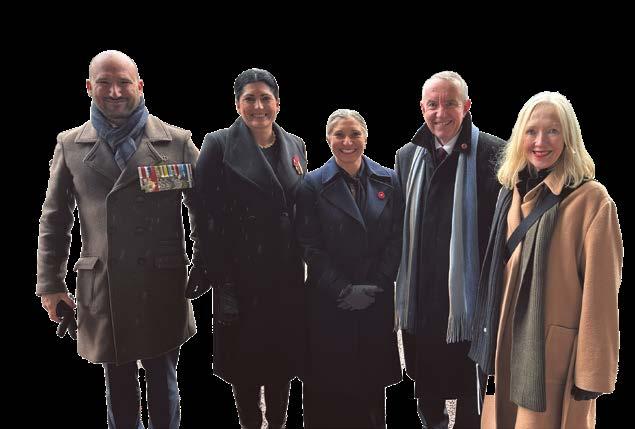
Attributed to Albert Einstein
I’ve learned that assumptions are the enemy of progress. I’ve tried to remain curious, not certain. ‘Hold strong opinions, weakly’ – author and scholar Paul Saffo’s dictum has always resonated deeply with me. The courage to care deeply, and the humility to let go when better ideas emerge. This is the kind of leadership we need to strive for in Defence, in DVA, and across the veteran and ex-service community. Not driven by titles
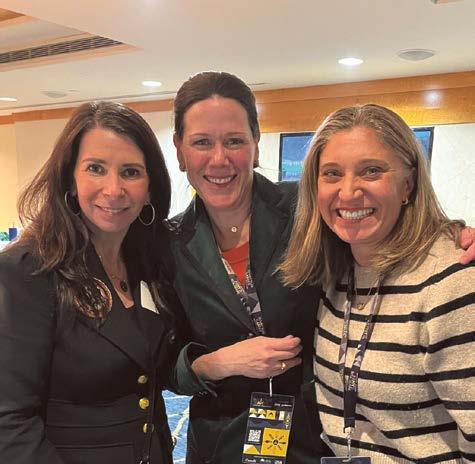
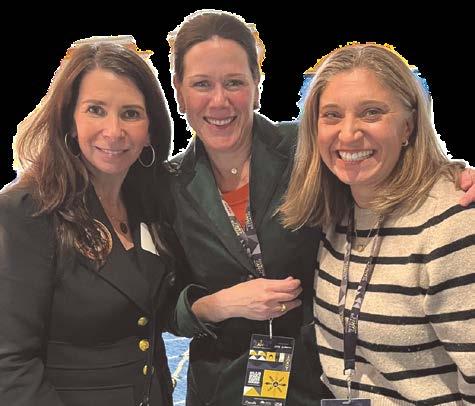
Over the years, I’ve come to believe that modelling teachability – being willing to be shaped by others – is among the most powerful things a leader can do. Whether supporting grieving families, listening to young people navigating trauma, or working with veteran parents on policy reform, the principle has always been clear: Nothing for you, without you.
Through collective effort, I’ve seen real shifts. The voices of veteran families – once marginalised – are now central to national conversations. That’s not just the result of individual advocacy: it’s the result of community. Of people who stood up, spoke out, and called for better – for themselves, and for those who come next.
One of the initiatives I’m most proud to see taking shape is the Postvention Workshop for veteran families bereaved by suicide, held last month. It’s something I’ve advocated for over 7 years – a journey driven by the belief that families should never walk through loss alone. This workshop reflected what this role has always been about: listening with intention, responding with compassion, and creating space for connection, healing, and hope.
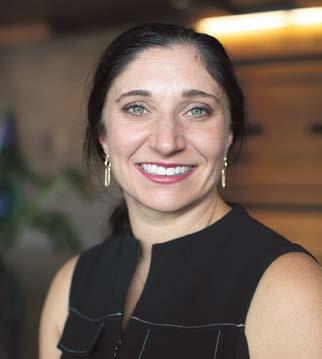
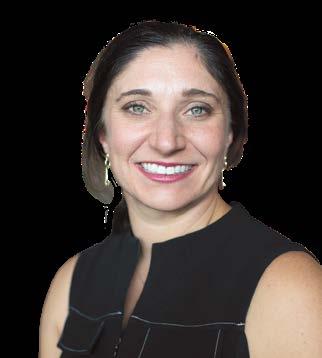
As I step away from this role, I do so not with a sense of finality, but with deep respect for all that still lies ahead, and immense trust in those who will carry this work forward. It continues in so many people across this country who have emerged as leaders for families. It continues on committees, in classrooms, homes, community halls, and places of remembrance. It lives in the everyday persistence of those who refuse to be unseen.
One of the greatest markers of success is continuity. I’m proud that this role – through years of steady advocacy, community engagement, and the support of government – will continue. It stands today as a trusted voice for veteran families, and a mechanism for both accountability and progress. That recognition ensures the work goes on.
While I may be stepping aside, the Repatriation Commission’s mission remains unchanged: to listen, to serve, and to keep veteran families at the heart of everything we do.
Thank you for allowing me to walk alongside you. It has been an honour and a privilege. This has always been a well-worn path, one shaded by darkness for far too long. But together, we’ve begun to shine light into that darkness, to clear the way forward for others, and to walk with those who need us most.
Though I will no longer be in this role, I will always be an advocate. I will keep walking this path, alongside you, continuing to listen, to learn, and to shine a light wherever it’s needed.
There’s still work to do. So let’s keep going – together.

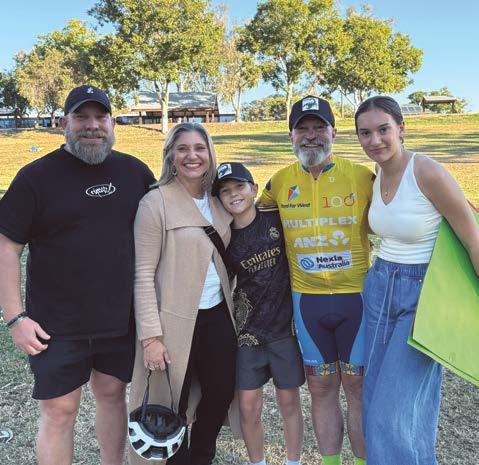
A message from Australian War Widows Inc.
In the aftermath of the Second World War, Australia mourned the loss of thousands of servicemen, leaving behind a generation of women facing an uncertain future.
Recognising their shared grief and the significant challenges ahead, one remarkable woman, Jessie Mary Vasey, took decisive action. On 22 November 1945, in Victoria, she brought together a group of war widows and founded the Australian War Widows Craft Guild, laying the foundation for what would become the War Widows’ Guild of Australia.
Jessie became the first President and remained in the role until her passing in 1966. She was appointed an Officer of the Most Excellent Order of the British Empire (OBE) in 1950 and its Commander (CBE) in 1963 for her service to war widows.
Jessie Vasey, widowed following the tragic death of her husband Major General George Alan Vasey, understood first-hand the isolation and hardship these women faced. Her vision was to create a selfhelp organisation where war widows could find companionship, mutual support, and a collective voice to advocate for their rights and welfare.
The initial meetings focused on practical assistance. Craft groups were formed, providing not only a creative outlet but also a means for widows to supplement their often meagre pensions through the sale of their handiwork. This spirit of self-reliance and shared endeavour quickly resonated and the Guild expanded across the nation, establishing branches in New South Wales, Western Australia, Queensland, South Australia, Tasmania and the Australian Capital Territory. From its inception, the Guild became a powerful advocate for war widows. Under Jessie Vasey’s leadership, the organisation successfully lobbied governments for improved pensions, housing, children’s allowances and healthcare benefits, and even built self-care units for war widows across several states.
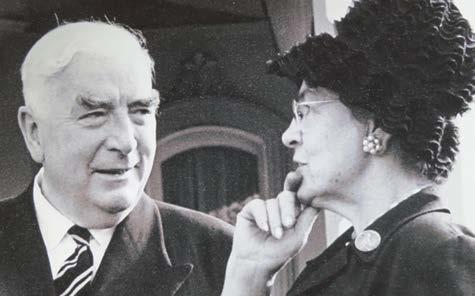
The Guild adopted a powerful motto, an extract from King George VI’s 1941 Christmas message: 'We all belong to each other. We all need each other. It is in serving each other and in sacrificing for our common good that we are finding our true life.' This ethos of unity and mutual support has remained central to the organisation’s work today.
Another enduring symbol of the Guild is its badge, featuring a kookaburra alighting on a branch of gum leaves. Designed by Hungarian sculptor Andor Mészáros, the kookaburra was chosen by Jessie Vasey for its industrious and cheerful nature, its lifelong mating habits, and its fearless defence of its young – qualities she saw reflected in the war widows themselves. The kookaburra’s unique “laugh” was a call to win the widow back to laughter. A symbol of hope and the possibility of finding joy again after loss.
By the time of Jessie Mary Vasey’s death, the War Widows’ Guild of Australia had grown into an influential national lobby group. Over the decades, it continued to evolve, adapting to the changing needs of its members and the broader veteran community, establishing social clubs, providing information, advice and support services.
In a significant step towards inclusivity, the organisation officially changed its name in 2020 to Australian War Widows (AWW). This change reflected a desire to acknowledge and support a broader range of women who had lost partners
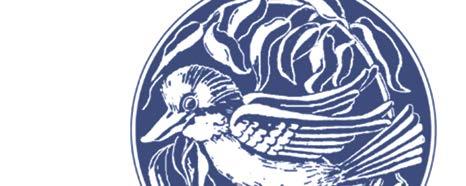

due to war and defence service, regardless of the nature of their partner’s passing.
In 2022, the first War Widows Day was commemorated in Queensland and New South Wales. In the following years, this day was recognised in the Australian Capital Territory, South Australia, Western Australia, Northern Territory and Victoria. On 19 October 2025, War Widows Day will recognise the 80th anniversary of the founding of our organisation.
Today, Australian War Widows continues the legacy established by Jessie Vasey, providing vital support, advocacy and companionship to war widows across the country. The organisation remains a steadfast beacon of strength, resilience and unwavering support for those women and their children who have borne the profound loss of a partner who served our nation. Our history is a testament to the power of unity in the face of adversity and the enduring spirit of Australian women.
If you are a war widow(er) and you would like to know more about connecting with others in your area, or you would like to be part of War Widows Day this year, please contact the AWW Office on 0427 735 871 or wwidowsnat@bigpond. com and we will direct you to one of the state or territory branches.
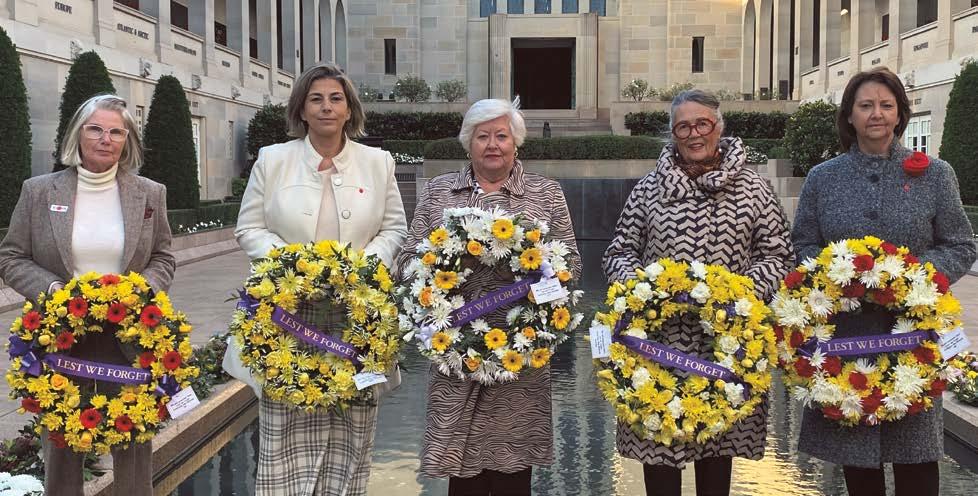
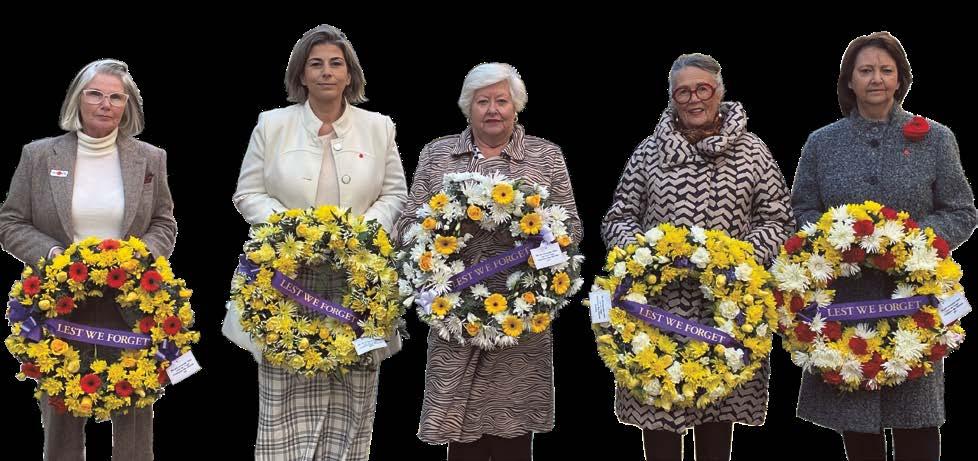

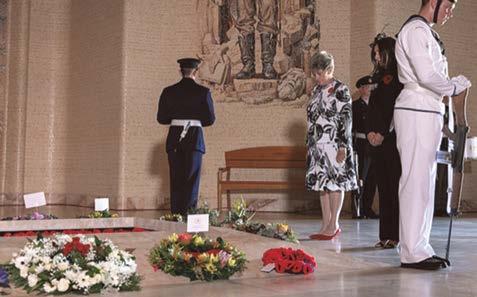
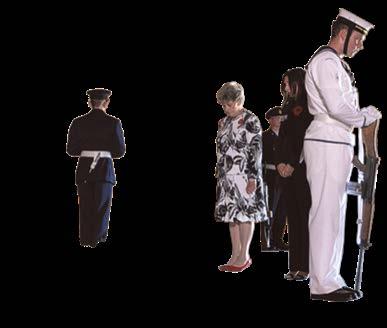

On 28 May 2025, Australian War Widows Queensland (AWWQ) Maroochydore Social Group proudly hosted its annual Friendship Day at the Maroochydore RSL. This cherished occasion brought together 150 members from across the region to celebrate camaraderie, shared history, and the enduring strength of war widows.
The Maroochydore RSL was abuzz with warmth, laughter and heartfelt conversation as members gathered for a day of connection and remembrance. The event began with a welcome address by the State President, Mrs Judy Smith, acknowledging the resilience of the AWWQ community, followed by a lunch and musical entertainment that added a joyful rhythm to the day. The program also included a moment of reflection to honour those no longer with us – a meaningful tradition that remains at the heart of Friendship Day.
The tradition of Friendship Day began in 1991 as an initiative by the War Widows Guild of Queensland to encourage connection and reduce social isolation among members. Originally launched with a series of informal gatherings, Friendship Days soon became staple annual events held across Queensland. Highlights from the early years include:
A message from the Families of Veterans Guild We are proud to announce the launch of our Resource Hub, a living library built to empower war widows, defence and veteran families through information sheets, webinar recordings, articles, videos and media interviews.
This Hub is a great place for veteran families to find the information they need, when they need it. Whether it’s a practical guide to support your physical and emotional wellbeing, information on your entitlements and the services available, or important updates in an article or an interview. The Resource Hub is here to empower war widows, defence and veteran families by providing them with the information, tips and tools to look after their wellbeing, stay connected and informed. Veteran families, including war widows, are often navigating incredibly complex systems,
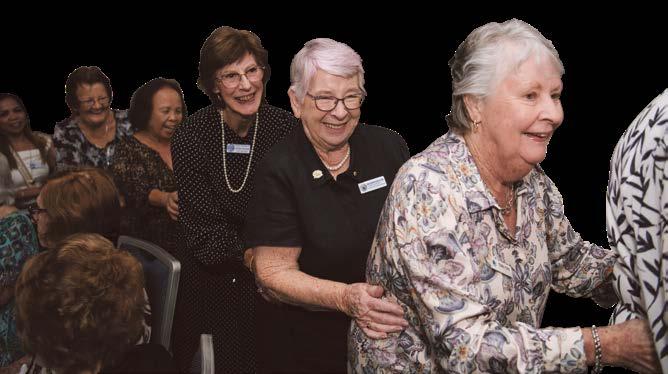
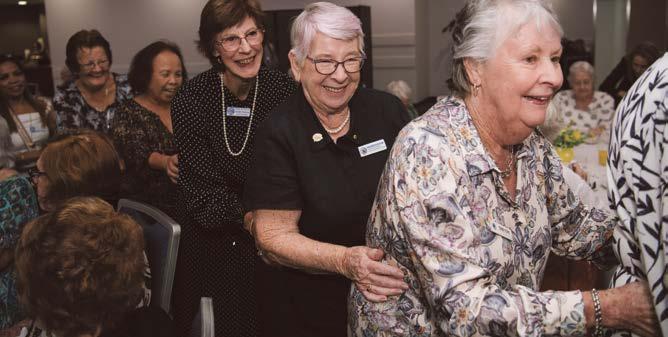
• 1991: The first recorded Friendship Day was held at Logan, followed by gatherings at Wynnum and Redcliffe.
• 1992–1996: Friendship Days spread throughout Queensland, with events held in Toowoomba, Townsville, Redlands, Mackay, and the Gold Coast.
• 1998: Bundaberg, Gympie and Logan featured among the host locations, showcasing the geographical reach and unity of AWWQ members.
• 2002–2007: Locations such as Noosa-Tewantin, Bribie Island, Ipswich and Hervey Bay continued the tradition of rotating regional events, enabling all members to participate regardless of where they lived.
These early gatherings laid the foundation for what has become one of the most treasured days in the AWWQ calendar.
This year’s Friendship Day not only honoured the past but also looked to the future, reaffirming AWWQ’s commitment to supporting the wellbeing and social connectedness of its members. The ongoing success of Friendship Day is a testament to the dedication of volunteers, staff and supporters who understand the importance of community healing and hope.
As the organisation prepares to mark its 80th anniversary in 2026, events like Friendship Day remind us that the legacy of support and friendship forged by women like War Widows founder Mrs Jessie Vasey continues to thrive. It is through these shared experiences that Australian War Widows Queensland ensures no war widow stands alone.
For more on upcoming events or to become involved, please visit our website at www.warwidowsqld.org.au or contact the Brisbane head office on 07 3846 7706.

where finding the information that is relevant to them takes time and research. It can also be extremely difficult to understand and, at times, confusing. Whether they need to understand the entitlements available to them, access support services, manage care responsibilities, or stay informed on what is new in the veteran space, families need to have a place where they can find the information and build their knowledge so they can navigate these systems with less difficulty.
Navigating a complex system can be different depending on where families are in their journey: it could be during service, after service or following the passing of their veteran family member. The information they need will be different at every stage. By bringing all this content together, we are making it easier for veteran families to find the information they need, and we are supporting their physical and emotional wellbeing, every step of the way.
You can explore all this at www.familiesofveterans.org.au/resource-hub Something isn’t there? We encourage you to share what you’d like to see in the Resource Hub by emailing guild@fov.org.au
All information is located in the one place and easy to use. It contains practical information, as well as tips on how to manage different situations veteran families may be exposed to along the way.
The Hub also includes the Guild’s media appearances, videos and articles so veteran families can stay informed on important changes and issues affecting them and their families. The Resource Hub will continue to expand, with new content and media being uploaded on a regular basis.
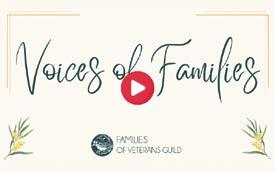
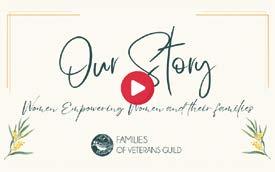
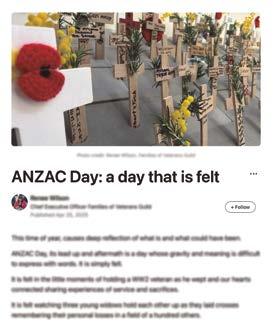
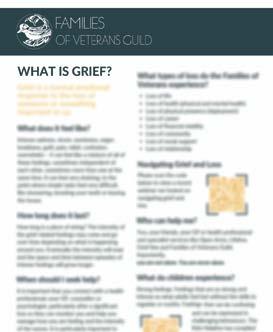

By Elena Rowland, Founder & CEO, The Flannel Project
The Flannel Project exists because heartbreak and trauma demanded action.
We’re a charity that supports survivors of veteran suicide – the friends, family, and witnesses left behind when someone we love can’t fight anymore. We’re doing postvention through the eyes of the veteran, understanding all the complicated layers that come with military service and loss.
Our work is built on 3 pillars: choice, connection, and communication. We offer practical help, counselling, and a voice when grief steals your words, especially in those brutal first weeks after loss.
Shannen Box was a Private in the Army. Fierce. Loyal. The kind of person who’d have your back without question. Her death ripped a hole through everyone who knew her. Her best friend Courtney found her body, alongside Shan’s partner Hannah.
Shannen Box with Flannel, the inspiration behind the name of 'The Flannel Project'
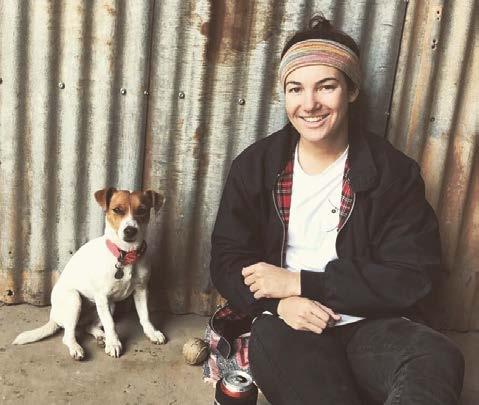
A message from Disaster Relief Australia
Veteran-led organisation Disaster Relief Australia (DRA) is on the ground again, this time assisting communities in northern New South Wales to recover from recent floods. Several Forward Operating Bases have been stood up across the region, including in Taree and Port Macquarie. Volunteers continue to undertake tasks including damage assessments, chainsaw operations and debris removal.
DRA continues to work closely with disaster response and recovery agencies including the NSW State Emergency Service (SES) and the NSW Reconstruction Authority.
The operation is named ‘Operation Locke’ in honour of Sergeant Matthew Locke MG, who was killed in action in 2007. Sargeant Locke, originally

That moment broke them both. We raised funds to get them into trauma therapy for a year – not because it would fix everything, but because they deserved support when the world felt like it was ending.
That’s where The Flannel Project started. In their pain. In our promise that no one should walk this road alone.
I served 14 years in the Army. It left scars – PTSD among them. But Shan’s death taught me something: survivors need more than sympathy cards and casseroles. They need real support. Community. A reason to keep breathing.
On 21 June, around 200 people gathered in Brisbane for our second annual Wear a Flan for Shan
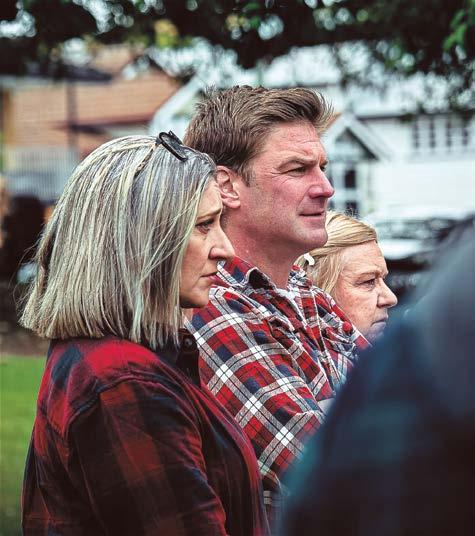
Walk. Each person carried something – a name, a memory, a weight that never really goes away.
This year’s theme was “The Silent Walk Home”. We started with speeches and shared stories. But on the return journey, we walked in silence. No words – just footsteps, flags, and the ache we all carried. At the end, we broke that silence together – survivors, supporters, soldiers, family – choosing hope over despair.
The silence wasn’t empty. It was full of everything we wish we could say to the ones we’ve lost. Breaking it reminded us why we keep speaking up – for those still fighting battles no one can see.
I’ve never felt anything like it –200 people carrying their grief together, in perfect silence. When we finally spoke agai n, it wasn’t just our voices anymore. It was theirs too.
– Steve Cotterill, poet and MC
Every dollar raised funds our SOS (Survivors of Suicide) Flannel Card program – up to $1,000 in immediate support during the first 4 weeks after a veteran suicide. It’s practical, personal, and sometimes life-saving.
We’re also pushing for something bigger: a national Flannel Flower Day to remember those we’ve lost to suicide in the veteran community. Because grief deserves recognition. And those who served – and were lost after service – deserve to be remembered.
To learn more about us, visit www.theflannelproject.com or follow us on social media.

from NSW, served with distinction in East Timor, Iraq and Afghanistan. In 2006, he was awarded the Medal for Gallantry after leading his patrol out of a deadly ambush under heavy fire.
DRA’s recovery capabilities continue to evolve, and the organisation is increasingly called upon as a viable alternative to the ADF in national disaster recovery. With almost 6,000 volunteers, Disaster Relief Australia has teams in every state and territory, with an increasing veteran cohort. DRA’s model of active volunteering has been proven to enhance wellbeing and mental health, particularly among veterans.
For more information about volunteering, visit www.disasterreliefaus.org
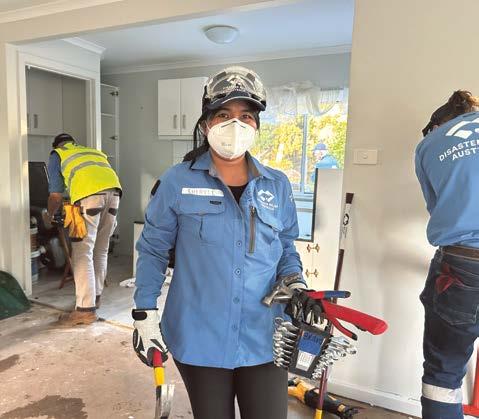
The following books, often self-published, have been written by, for and with veterans. The books and their descriptions are submitted by readers. DVA takes no responsibility for the accuracy of their content or the opinions expressed in them.
By Richard Bomball (AVM Retired)
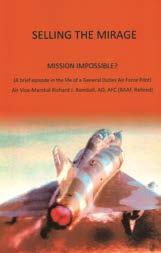
This “brief episode in the life of a General Duties Air Force Pilot Air Vice-Marshal Richard J. Bomball AO, AFC (RAAF, Retired)” is in fact a detailed account of the day-to-day activities of the team which successfully negotiated Australia’s first major international arms export: the sale of the RAAF’s retired Mirage fleet to Pakistan. The account covers the hurried preparation, development of negotiating strategies, and the events, some quite unexpected, that led to the finally agreed price and schedule of payments, as well as the intense period of contract negotiations.
• Pages: 80
• Cost: $27.65 plus postage outside of Canberra
• To Buy: www.bytespublishing.com.au
By Samantha Ohlsen
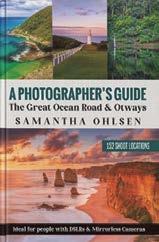
Discover this definitive guide for photographers by Army veteran Samantha Ohlsen, featuring 152 shoot locations from across the Great Ocean Road and Otways region. Whether you are a seasoned photographer or an enthusiastic beginner, this book will equip you with everything you need to capture your best shots. The book will save you countless hours of research to avoid missed opportunities and provide the chance to learn insights from an expert who spent more than 3 years mastering the region.
• Pages: 750
• Cost: $39 (e-book), $89 (hardcover)
• To Buy: www.samanthaohlsenphotography.com.au
By Michael Claringbould
This volume presents the most detailed history to date of the Douglas Boston light bomber in RAAF Pacific service. Unusually just one unit, No. 22 Squadron, operated the type in New Guinea throughout late 1942 to mid-1944 where it flew daring low-level attack missions, before advancing to the Netherlands East Indies.
• Pages: 148
• Cost: $39.95
• To Buy: www.avonmorebooks.com.au
By Allan A Murray
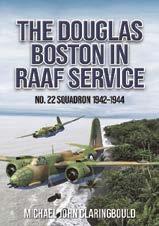
By Michael P. Grant

The Fall of Singapore was the catalyst for some of the worst atrocities perpetrated by the Japanese on Allied forces. This is a concise history of Japanese brutality that commenced on the Manchurian Peninsula leading to attacks on British and French colonies in the Far East. Highlighted are the major roles played by the Australian military which conducted surrender ceremonies at Borneo, Morotai, Balikpapan, and Papua New Guinea in a fine monograph that reminds us of the surrender that took place in Tokyo Bay 8 decades ago.
• Pages: 77
• Cost: $20 + postage
• To Buy: garnettm@bigpond.net.au
By Sue Sacchero

Sue Sacchero describes her work as faction: part fact and part fiction, involving the experiences of her great-grandmother’s family during the Great War. Extensive research, foggy childhood memories, family legend, and poetic licence coalesce in a far-reaching yarn that it is both ordinary and extraordinary. Australian inventiveness, joy, heartbreak, naivety, gallantry, courage and sheer endurance punctuate reports of horrific battles at Gallipoli, Fromelles, Pozieres, in Belgium and along the Western Front. The account is completed by heart-wrenching service in war hospitals in England and France and casualty clearing stations close to the front, as well as the tragic impact on the home front.
• Pages: 420
• Cost: $6.99 (e-book), $33.00 (paperback), $30.00 (signed copy from author) plus postage
• To Buy: Amazon or suesacchero@icloud.com
By Frank Kovacs

Allan Murray offers observations upon an Arab Muslim society (Syria) and the Jewish state of Israel, Observer service on the quiet Golan Heights and the more hectic and dangerous Israeli Controlled Area of southern Lebanon. He also details dodging landmines, roadside bombs, indiscriminate shelling, armed and occasionally irate belligerents, air attacks, Katyusha rockets and tank fire. Australians have been exposed to this cocktail in the endless conflicts around Israel since the 1950s. This is a story of the background, the experience, the belligerents and the United Nations from one Australian Observer’s perspective in the early 1990s.
• Pages: 186
• Cost: $4.99 (ebook) $31.99 (paperback) US$31.99 (hardcover)
• To Buy: Amazon
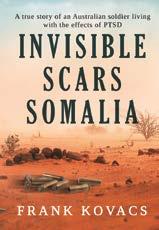
This is the true story of an Australian soldier living with the effects of PTSD who, together with 2 British military personnel, was seconded by the US to join a Central Intelligence Agency (CIA) special agent and an Ethiopian female warrior to infiltrate to Luuq, a rural town and staging area for Al-Shabaab rebels in Central Somalia, on a clandestine mission. Their secret and urgent mission was to observe the movement of rebel forces, their equipment and ammunition, then report back directly to CIA headquarters .
• Pages: 484
• Cost: $39.00
• To Buy: Amazon
By Russ Morison

This is a story of the quiet, unsung heroes of the Vietnam War who left behind family, home and a population who were not all behind them to help bring about peace in that troubled land called Vietnam. They did their job well and the results are plain to see now 50 years later. This book reflects on the service of some 2,000 Royal Australian Army Service Corps men who served in Corps units, and the Australian Army Training Team Vietnam. It contains many personal stories and extracts from Par Oneri – Corps journals, and other material by those who served in that conflict.
• Pages: 250
• Cost: $37.00 plus postage
• To Buy: dabblers3@gmail.com or call 0408 947 935
If you have a book for a subsequent edition, please email vetaffairs@dva.gov.au . Please provide the following: title, name of author, blurb (short description that we reserve the right to edit), price, how to buy it, and image of the front cover. Submitting a book does not guarantee publication. August 2025 Vetaffairs 25
On 25 June, Korean War veterans, families and descendants gathered for a moving National Commemorative Service at the Australian National Korean War Memorial in Canberra to mark the 75th anniversary of Australian service in the Korean War. This was an opportunity to honour and remember the service of all Australians who served in the Korean War and the post-armistice period, their sacrifice, and the families who supported them.
We remembered the more than 18,000 Australian personnel who served in Korea and those who lost their lives: 340 in the Korean War, 16 while monitoring the dangerous and precarious ceasefire after the armistice, and 11 in the support bases in Japan. We remembered the wounded, those taken prisoner, and the more than 40 personnel who are missing in action, presumed dead.
At the service, Army veteran Stanley Starcevich vividly recalled the extreme conditions of the war. ‘The ground was mountainous, with rice paddies and orchards,’ Stanley said. ‘It was hot and humid in summer, and wet and miserable during the monsoons. In the winters, we suffered from snows and bitter winds. Frozen ground made digging in difficult, and it was no fun living in the open in temperatures well below zero!’
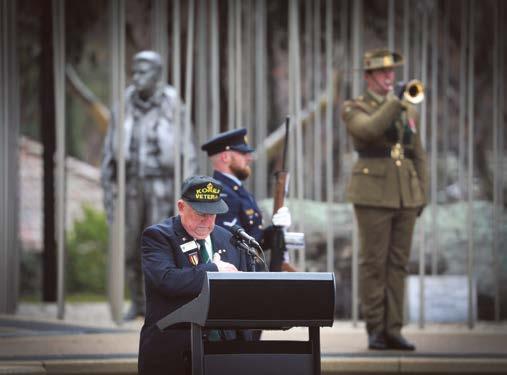
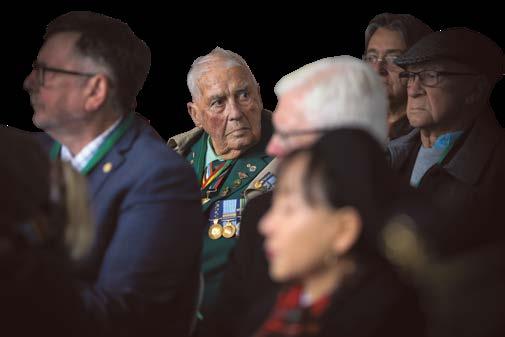

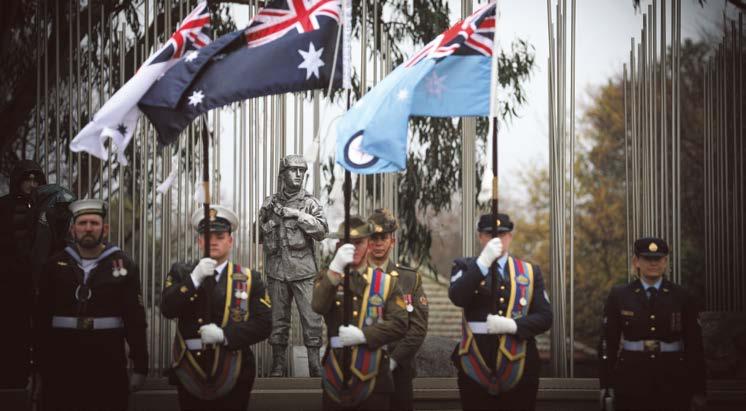
He also paid homage to the ‘good blokes’ and ‘real characters’ who served alongside him: ‘On patrols and in our battles, we experienced all the emotions, tension, fear, confusion and brutality of warfare. We witnessed courage and the true meaning of sacrifice.’
Fellow Army veteran John Munro OAM echoed the sentiment: ‘The winter months were shocking in the snow, rivers froze. But we always got on well together, because we had a job to do.’
We didn’t do much talking, We didn’t raise a fuss.
But Korea really happened So please – remember us.
– Veterans’ Poem of Remembrance
On 25 June 1950, after years of political tension, North Korean soldiers stormed across the 38th parallel into South Korea, beginning the Korean War. A mere 5 years after the Second World War ended, Australians again found themselves at war – our nation became one of the first to be involved, becoming only the second nation after the United States to commit personnel from all 3 armed-services to the United Nations force.
Australian sailors, soldiers, airmen and more than 150 nurses were posted to both Korea and
the support bases in Japan. Australia’s involvement in the Cold War conflict began with the commitment of HMAS Shoalhaven and Bataan in late June for patrol and escort duties. The Royal Australian Air Force’s (RAAF) No. 77 Squadron, which was stationed at Iwakuni, Japan, was swift to action. The Army would enter the fray in late September, with the 3rd Battalion, Royal Australian Regiment, quickly distinguishing itself with a victory at the Battle of Yongju in October.
The armistice between North Korea and South Korea achieved on 27 July 1953 holds to this day, but a peace treaty has never been signed. More than 40 Australians from across all 3 military branches remain missing in action in Korea. In 2015, the Army’s Unrecovered War Casualties unit stood up the Korea Missing in Action (MIA) Working Group to identify and recover Australia’s MIAs. As many MIAs went missing in North Korea, accessing their last known locations remains difficult.
In Korea, Australian service personnel won international respect for their courage, endurance and dedication to duty. Seventy-five years on – we remember – and we thank you for your service. Lest we forget.
The National Commemorative Service to mark the 75th anniversary of Australian service in the Korean War was broadcast nationally by the ABC and is available on iView (iview.abc.net.au and search for ‘Korean War’).
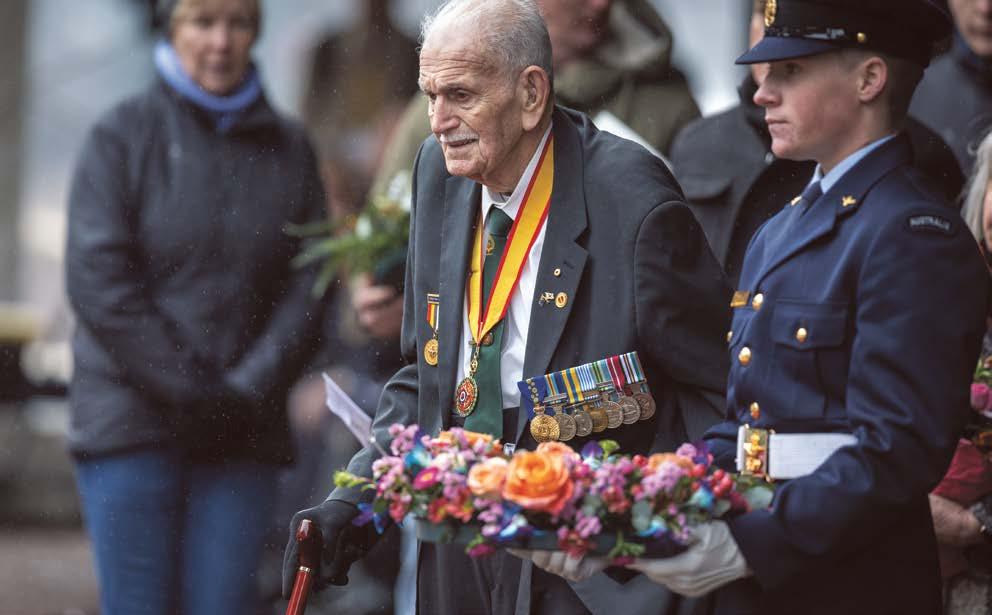
In late June 1950, the US called on Australia for air support. The Royal Australian Air Force’s (RAAF) No. 77 Squadron was stationed at Iwakuni, Japan, and responded to the call, quickly preparing for war.
On 2 July 1950, pilots of No. 77 Squadron flew ground support operations over Korea, becoming the first non-Korean and non-US unit to join the fight. Over the next 3 years, No. 77 Squadron flew almost 19,000 sorties and made the transition from flying propellor-driven American P-51 Mustangs to jet-engine British Gloster Meteors. The unit focused mostly on close air support and ground interdiction missions but was also engaged in air-to-air combat in the infamous “MiG Alley”.
The courage of Squadron Leader Fred Lawrenson
Among No. 77 Squadron airmen was Squadron Leader Frederick ‘Fred’ James Lawrenson, a recipient of the Distinguished Flying Cross for actions in the Second World War. On 24 December 1952, while leading 4 Meteors on an armed reconnaissance of a main road in North Korea, Fred saw enemy ground targets and descended to strafe them. As he did, his plane was hit by machine gun fire and crashed into the hills below. Fred’s body was never recovered, and he is presumed killed in action.
For his exceptional conduct in Korea, Frederick Lawrenson was awarded the Air Force Cross. In a letter to Fred’s wife, Yvonne, his commanding officer wrote: ‘He was held in the highest esteem by everyone here and he was undoubtedly one of the most popular officers in the Squadron.’ Yvonne never remarried and raised their daughter, Jill, as a single mother. She passed away in 2017.

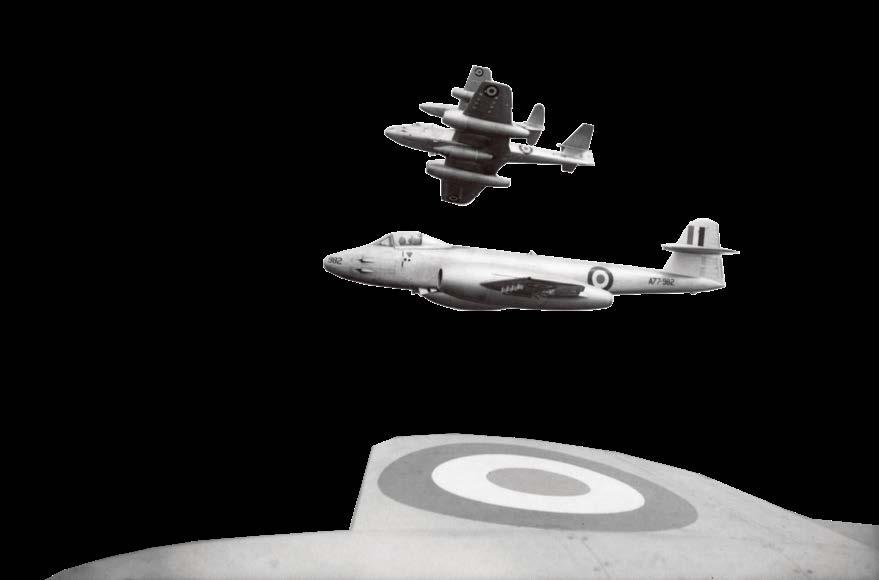

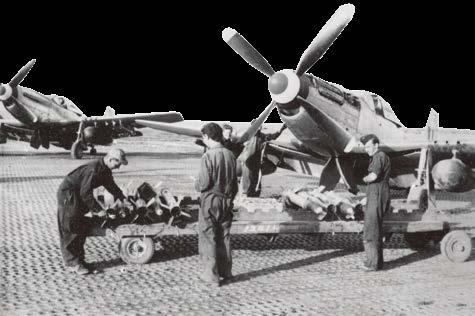
Two mates flew, one came back
Another Australian who flew with No. 77 Squadron in Korea was Pilot Officer Donald ‘Don’ Campbell Ellis. Don joined the RAAF in 1947 and earned his wings at No. 1 Flying Training School, Point Cook. It was here that he met fellow airman Brian Dorrington, and the pair formed a close friendship. With some persistence, Brian even convinced Don to introduce him to his sister, Adrienne, and a romance developed.
When the war broke out, Brian was posted to Iwakuni flying C-47 Dakotas, which played a major role in transporting equipment, supplies and wounded soldiers between Japan and Korea. Don was already stationed in Japan with No. 77 Squadron and immediately began combat operations in Korea. Over 6 months, Don would take to the air more than 70 times. On 22 December 1950, his plane was shot down by suspected enemy ground fire east of Pyongyang. It was his second-last mission before he was due to return home.
Don’s mother learned of his downing on Christmas Day but held out hope that he could be alive and in captivity. She received an official letter informing her that an American prisoner of war had seen a prison camp guard wearing Don’s identification bracelet, inscribed with his service number, which the guard told him he had retrieved from Don’s body following the crash.
Tragically, Don Ellis’ body has never been recovered, and he is presumed killed in action. For his service, he was awarded the US Distinguished Flying Cross and Air Medal.
Brian Dorrington returned safely to Australia in September 1951 and married Adrienne in January the following year. He enjoyed a long career in civil aviation and passed away in 2021 at 92 years of age.
I served alongside some magnificent men. We understood our duty and worked hard to keep the aircraft running and cargo moving. At the 70th anniversary of the armistice, it was clear how enduringly grateful the South Koreans were for how Australia stepped up to help them.
John Taylor, RAAF veteran of the Korean War
Of more than 40 Australians still missing in action (MIA) in Korea, 18 were pilots from RAAF No. 77 Squadron. Julie Dorrington, daughter of Brian Dorrington and niece of Don Ellis, and Jill Talty, daughter of Fred Lawrenson, served on the Korea MIA Working Group as family representatives. They remain committed to finding and laying to rest the missing servicemen and ensuring those who fought and died during the Korean War are never forgotten.
Both Julie and Jill have made commemorative trips to South Korea. ‘My contact with the Korean people has reinforced that the loss of my father is not in vain given the freedom they experience today,’ Jill says. Julie and Jill attended the National Commemorative Service on 25 June 2025. They laid a wreath in honour of all the missing Australians, including Fred and Don.
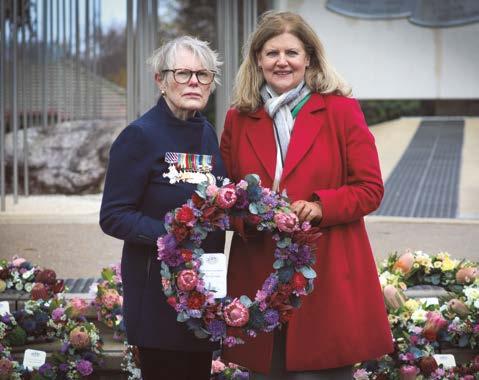
In Melbourne’s outer southern suburbs, Cornish College has transformed a vision into a powerful place of remembrance that brings together more than 700 students for moments of reflection and respect.
As a young school without the longstanding military connections of more established institutions, Cornish College faced a unique challenge. ‘We didn’t have a designated “place” where the service and sacrifice of defence personnel could be commemorated,’ explains Dennis Freeman, Director of Community Relations.
The solution came through 2 DVA Saluting Their Service Commemorative Grants that have helped the College create a spectacular memorial garden set within its 100 acres of natural parkland.
The first grant in early 2022 enabled the College to design, manufacture and install 3 memorial panels as the garden’s centrepiece. A second grant
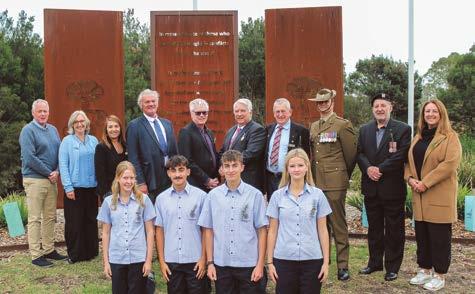

in early 2024 completed the vision with flagpoles and landscaping.
‘Without the Saluting Their Service grant, this memorial garden would not have been created,’ Dennis acknowledges.
The impact has been profound. What began as a commemorative project for the college’s 10th anniversary has become a living, breathing part of daily school life. Students don’t just visit for special occasions but walk through regularly, making remembrance part of their everyday experience.
‘Having a special place to acknowledge Anzac Day and Remembrance Day has strongly influenced the way members of the College community approach these events,’ Dennis notes. ‘Each year, you can sense that our students do so with increasing respect, reverence and understanding.’
The garden’s influence extends beyond the school gates, strengthening ties with Longbeach RSL and welcoming current and former service personnel to special events. Dennis notes the response has been wonderful: ‘Those who visit often remark on how beautiful and appropriate the garden is, set in a special part of our natural parkland.’
At this year’s Anzac Day Assembly, student choristers performed both the Australian and New Zealand national anthems, with the first verse
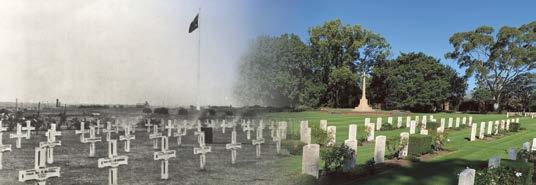
Since its foundation half a century ago, the Office of Australian War Graves (OAWG) has held the solemn responsibility of establishing and caring for official commemorations of commonwealth war dead and eligible veterans laid to rest in war cemeteries, public cemeteries or commemorated in gardens of remembrance. This important work provides the opportunity to honour and remember the service and sacrifice of veterans who die in war and provides commemoration for eligible veterans who survived their war services, but who later die from service-related injuries or conditions.
Over the past 50 years, OAWG has cared for 76 War Cemeteries and plots, establishing 10 unique gardens of remembrance, and providing more than 354,000 individual commemorative markers for war dead and eligible veterans in Australia, Papua New Guinea and the Solomon Islands. The OAWG will continue to care for these commemorations in perpetuity.
This year, OAWG developed the 50th Anniversary Commemorative Rose ‘In Perpetuity’ to acknowledge and to continue to promote the work of OAWG and draw attention to the recognition of war dead and post-war dead Australian
veterans. Commemorative roses in a military context are often red and OAWG developed a rose that would stand out as both different and fitting, settling on a deep orange rose.
During its flowering, the rose extends from light to dark but has a dominant ‘sun-burnt’ orange presentation reminiscent of an Australian sunset alluding to the Ode of Remembrance: At the going down of the sun and in the morning, we will remember them . The name ‘In Perpetuity’ reinforces the ongoing nature of remembrance, but also the work of OAWG in the perpetual maintenance of war cemeteries, graves and places of individual commemoration of our fallen.
sung in M ā ori, creating a particularly moving moment that reinforced the true spirit of Anzac.
Cornish College’s success represents just one story among many from the 2024–25 Saluting Their Service Commemorative Grants Program. Across 3 funding batches, 168 organisations nation-wide shared more than $2.5 million. These diverse projects, from memorial refurbishments to educational podcasts, are all united in preserving Australia’s military heritage and ensuring veterans’ stories continue to resonate with future generations.
‘Our hope is that our students now understand more about the sacrifice of war,’ Dennis reflects, ‘and that the garden will provide the College and local community with a substantial historical place that will inform and educate for many years to come.’
The 2025–2026 Saluting Their Service Commemorative Grants Program is open for applications. To find out more, visit GrantConnnect at www.grants.gov.au
We encourage the community to discover and appreciate the rich and often heartfelt history of those the OAWG has commemorated, welcoming all to share the stories of family members who may no longer be with us. You can do this by pausing to reflect when you visit one of Australia’s war cemeteries and gardens of remembrance – most are to be found in general cemeteries, capital cities and large regional centres. To learn more, visit www.dva.gov.au/ wargraves 75th anniversary of Australian service in the Malayan Emergency
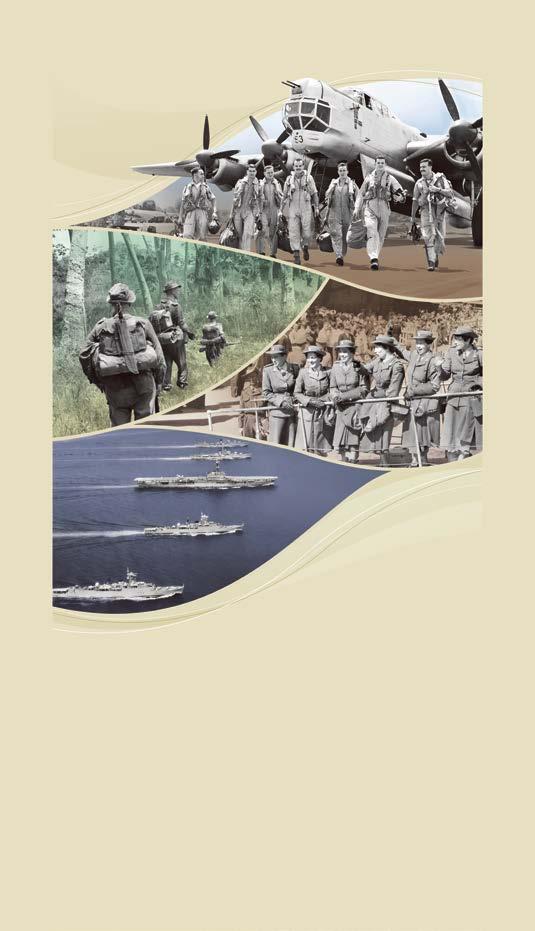
31 August 2025
Rond Terrace, Lake Burley Griffin, Canberra
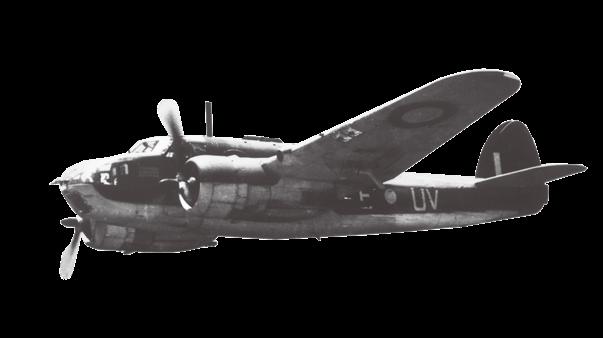
The journey to find, identify and commit the remains of Australian Second World War aviators has ended with a commemorative service at Bomana War cemetery.
On 19 May, the RAAF conducted a committal service at Bomana War Cemetery in Port Moresby for the remains of 2 aviators killed during a mission off what is now Papua New Guinea on 5 September 1943.
The aviators – Warrant Officers Russell Henry Grigg (navigator) and Clement Batstone Wiggins (pilot) – were among a crew of 4 aboard a Beaufort light bomber (A9-186) that was shot down during an attack on Japanese forces at Gasmata on the island of New Britain.
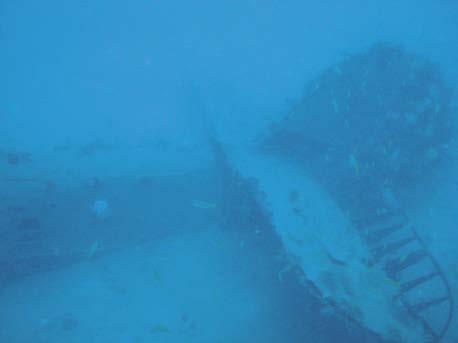
The wreckage was found in 43 metres of water, 1.4 kilometres southwest of Gasmata in late 2020. Bone fragments from Warrant Officers Grigg and Wiggins were positively identified following investigations undertaken in February 2022. The mission involved the use of specialist divers who worked on an aircraft extensively damaged by fire and covered in layers of sediment and marine growth.
The service was attended by Australian and Papua New Guinean dignitaries, including DVA Secretary Alison Frame, as well as relatives of the aviators.
After the service, Roger Grigg, the grandson of Warrant Officer Grigg, said that it meant a lot to his family to finally be able to say goodbye. ‘It is fitting to bury my grandfather in this peaceful location, at rest with so many other Australians who never came home,’ he said. ‘My family is grateful to the Air Force for giving us the opportunity to say goodbye.’
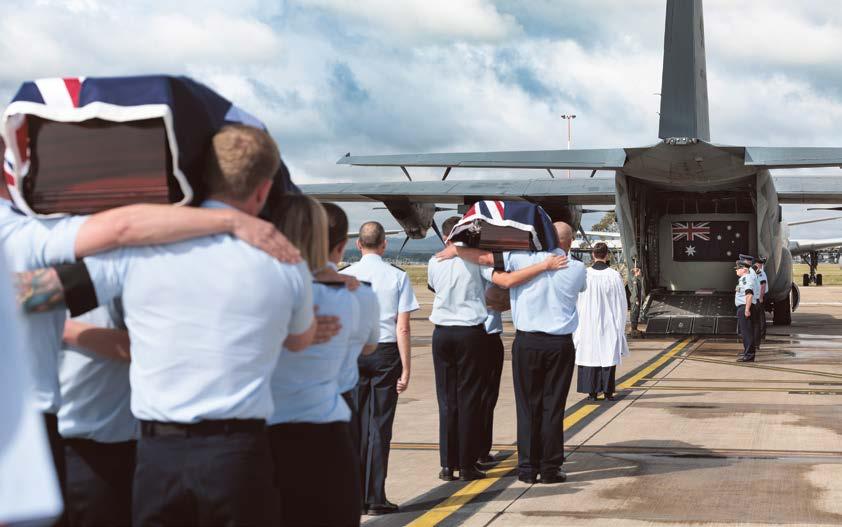
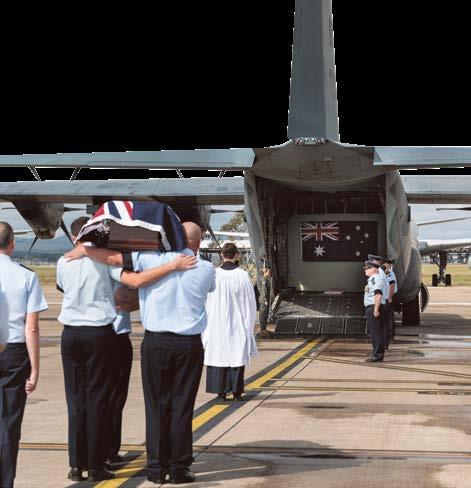
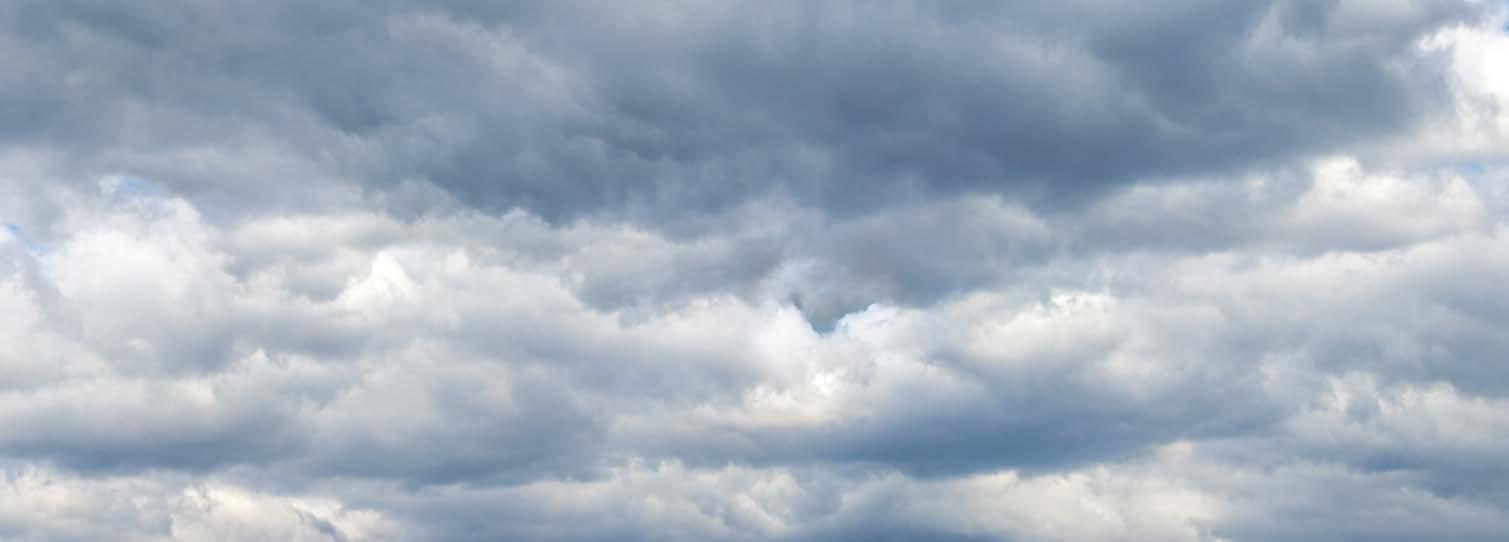
Sadly, the remains of the 2 other crew members on board, Flight Sergeants Albert Beckett and Gordon Lewis Hamilton, were not found. However, a memorial service for all 4 crew took place in April 2024 at RAAF Base Amberley in Queensland.
The identification and recovery missions of Beaufort A9-186 were sponsored by businessman and philanthropist Andrew Forrest AO. The initial discovery of A9-186 was made by an Ocean Ecology Pty Ltd dive team working for Dr Forrest as part of a search for his uncle, who was lost during a mission to Gasmata while piloting another Beaufort.
The RAAF’s Historical Unrecovered War Casualties (HUWC) team worked with the Minderoo team and Papua New Guinea’s National Museum and Art Gallery on the 2022 mission. Osseous material was returned to Australia for further analysis by RAAF anthropologists. One of the officers involved in part of the initial investigation was Flight Lieutenant Sarah Croker, a reservist employed to provide skills in forensic anthropology to the team. Her job was to desalinate and dry the bone material, then confirm that it was human.
‘I hadn’t dealt with remains found underwater before, but I was pleased that I was able to tell right away that they were human. I also thought it may be likely the remains may have been from 2 people, Lieutenant Croker said.
Flight Lieutenant Croker considers this work to be very important: ‘It’s extremely satisfying to be able to put people to rest properly, and allow families to get closure. I attended the memorial service [at RAAF Amberley]. It was the first time I
To confirm which remains belonged to which aviator, the HUWC asked the NSW Forensic and Analytical Science Service (FASS) to extract DNA material because it is one of the few laboratories in Australia capable of extracting and analysing DNA. They also provided DNA profiles from relatives of the 4 airmen to see if there was a match.
‘Any time you’re testing historic remains it’s challenging,’ says Clint Cochrane, FASS’s Operations Director, Criminalistics. ‘Water is very effective at degrading DNA … Going into the process, we didn’t think we’d get results. As it happens though, we got quite a bit of high-quality DNA.’
In addition to routine DNA testing, the FASS team do 2 more specialised forms of DNA testing: Mitochondrial (DNA that passes down the maternal line), and Y-STR (which passes down the paternal line). It is not typically possible to do routine testing on highly degraded DNA. While the bulk of FASS’s work relates to criminal and coronial cases, it has been working with the ADF for around 10 years on identifying the remains of service personnel. ‘We appreciated being a part of this work,’ says Clint. ‘It’s not often that we have the opportunity to resolve cases such as these, and in so doing provide solace and closure to the relatives.’
Warrant Officers Grigg and Wiggins joined more than 3,300 Australian and 40 New Guinean defence personnel who have been laid to rest in the Bomana War Cemetery. The wreckage of A9-186 will remain on the sea floor as a Lest we forget.


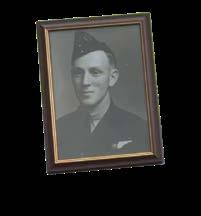
Anne Carroll OAM, the granddaughter of Charles Bean – Australia’s first official war correspondent and founder of the Australian War Memorial – led the official opening of the Memorial’s new Charles Bean Research Centre in Canberra on 5 June.
Australian War Memorial Director, Matt Anderson PSM, and the Minister for Veterans’ Affairs and Defence Personnel, Matt Keogh, also participated in the new research centre’s opening to the public.
Ms Carroll honoured her grandfather’s legacy at the event, and said Charles Bean would have been in awe of the world-class facility named after him.
Here is their spirit, in the heart of the land they loved; and here we guard the record which they themselves made.
Charles Bean
‘Bean would have been amazed by this magnificent building,’ Ms Carroll said. ‘From the Gallipoli coastline detail on the ceiling to the cutting-edge storage and viewing spaces, every detail has been meticulously planned. It’s a true testament to his vision.’
The research centre houses priceless artefacts from the National Collection, including Bean’s personal notebooks, letters and diaries – starting

from when he sailed with the First Australian Imperial Force in 1914.
Matt Anderson said the Charles Bean Research Centre was a cornerstone of the Memorial’s ambitious development project.
'Many overlook that the Australian War Memorial is not just a shrine and museum, but also a vital archive,’ Mr Anderson said. ‘Indeed, the Memorial can trace its genesis to the establishment of the Australian War Records Section in 1917.
‘This new facility houses and preserves our extensive archives, offering researchers, historians and visitors access to a wealth of Australian military history. It’s a space to protect, digitise and share these invaluable records for generations to come. We’re proud to have Bean’s family help us launch this building, ensuring his legacy lives on.’
The Charles Bean Research Centre is open to visitors Monday to Friday 10:00 am – 4:30 pm, and Saturdays 1:00 pm – 4:30 pm.


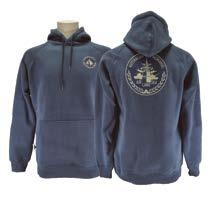
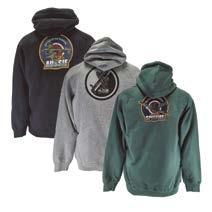


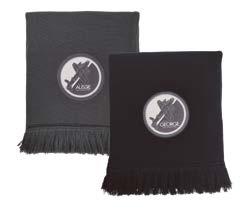
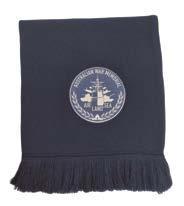
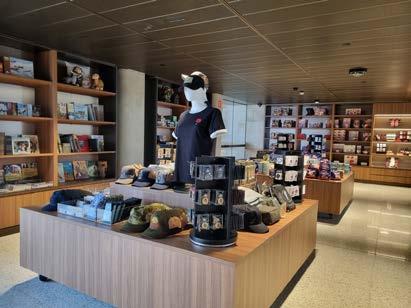

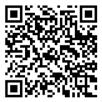
B Squadron 3 Cavalry Reunion
29–31 August 2025, Darwin, NT
For those who served in B Sqn 3 Cav Regt, Lavarack Barracks, Townsville, between the unit’s return from Vietnam in 1972 until the amalgamation to become B Sqn 3/4 Cav in 1980.
Contact: Marcus Tilbrook marcus@tilbrook.xyz
RAAF Surface Finisher (SURFIN) Reunion
12–14 September 2025, Ipswich, QLD
We are excited to extend a warm invitation to all ex-SURFIN members and their partners to join us in celebrating the history and background of the mustering. Laughter and a good time guaranteed.
Contact: Garth Steinhardt 0487 195 418 ghstein@tpg.com.au
RAN Destroyer Escort Personnel
15–16 October 2025, Frankston Arts Centre, VIC
The reunion is for all personnel who served in any of the 6 Destroyer Escorts. An informal meet & greet will be held on the evening of the 15th, with a more formal dinner on the 16th. You can indicate your interest on the All De Reunion Facebook page.
Contact: Rory Munn 0414 897 484
alldereunion@gmail.com
RAAF Ground Equipment Maintenance Association
17–19 October 2025, Perth, WA
An open invitation is extended to ALL ex-RAAF members, regardless of mustering, who have served/currently serving at a GEMS or a MEOMS unit. Laughter and a good time guaranteed.
Contact: Ralph Feige 0422 355 682 ralphfeige@gmail.com
Tamworth Aircrew Reunion 17–19 October 2025, Tamworth, NSW
Annual North by Northwest Aircrew Reunion. Current and retired military aircrew: all nationalities and aircrew specialisations welcome. 17th – meet & greet; 18th – clay target shoot and BBQ; 18th –Reunion Dinner (formal); 19th – Remembrance Ceremony and wreath laying; 19th – AGM and recovery session.
Contact: Dennis ‘Rhino’ Hume
humanhovell@icloud.com www.facebook.com/groups/ NNWAircrewReunion/ 8th RAN Electronic Warfare Branch Reunion
24 October 2025, Wrest Point Casino, TAS
The reunion for Branch personnel (Gollies) of all ranks
will start at the casino for a meet & greet on the 24th, dinner on the 25th and a farewell venue (TBA) on the 26th. Accommodation at the casino is available for ex-EW personnel at a discounted rate. Visit the Facebook page for details and updates.
Contact: Richard Waldie 0418 693 288 rgwaldie@tpg.com.au www.facebook.com/groups/ gollies/
3RAR Back to Woodside Reunion 2025
24 October 2025, Adelaide Hills Convention Centre, SA
We are bringing together members, family and friends of the 3rd Battalion Royal Australian Regiment ‘Old Faithful’. There will be a meet & greet on Friday 24th, dinner on Saturday 25th and lunch on Sunday 26th, all located within the Handorf Discovery Park. Accommodation is available at discounted rates for a limited time. To register your interest and for further details, visit the website.
Contact: Ken Nash 0437 335 438 nashywoof3@gmail.com www.3rarback2woodside. com
Submarines Association Australia Reunion – SUBCON2025
24–26 October 2025, Sage Hotel, Wollongong, NSW
Annual reunion for all submariners and partners. Friday – meet & greet; Saturday – dinner dance; Sunday– AGM and visit to vintage train museum.
Contact: Geoff Anderson 0413 980 091 nswsubcon.25@gmail.com www.submarinesaustralia. com
1st Australian Logistic Support Group
24–28 October 2025, Busselton, WA
Reunion for Headquarters & Headquarters Company 1 ALSG ex-Vietnam. Please make contact for more details.
Contact: Tony Brown / Trevor Sargent
0428 852 736 / 0400 803 554 tony11raye13@gmail.com / t.sarge47@gmail.com
2025 JR Reunion – Navy
10–14 November 2025, Fremantle, WA
Hosted by the Tingira Australia Association (Tingira Boys).
Contact: Mark Lee
0417 223 040 tsec@tingira.org.au www.tingira.org.au
Air Defenders Malaysia Reunion 10 November 2025, Adelaide, SA Reunion during the week of Remembrance Day 2025 to mark the 60th anniversary of the introduction of National Service in 1965, the raising of 110 LAA Battery at Woodside in 1965, and many National Servicemen celebrating their 80th Birthdays in 2025.
Contact: Bob McEvoy 0412 310 947 bottleart19@gmail.com
HQ1ATF Association
17–21 November 2025, Painters Island Holiday Park, Wangaratta, VIC
Welcome dinner on the 17th. Full day tour to Glenrowan and the King Valley, and a commemorative dinner on the 20th. Dinner will be preceded by a 5 pm public Dedication Service at the RSL Memorial.
Contact: John Verhelst 0437 212 121 john@jhconsult.com.au www.hq1atf.org
106 Field Workshop reunion
1 December 2025, Seymour, VIC Celebrating 56 years since the commencement of up-armouring of M113 that saved many lives. The function at the Royal Hotel also incorporates the 83rd birthday of RAEME and Vietnam Veterans Commemorative Walk. The Australian Light Horse Memorial Park is worthy of a visit.
Contact: Milton Pearson or Elmer ‘Fud’ Varga 0488 050 261 csm1066869@gmail.com or fuddvarga@netscape.net
Officer Cadet School Portsea –Class of 1975
7–9 December 2025, Canberra, ACT
If you wish to attend the December 75 Graduating Class 50th Reunion and are not already receiving reunion emails, please make contact.
Contact: Bruce Scott 0481 055 953 brucescott@tmrc.com.au
40-year Kapooka Reunion –31 Pls 1986
17–18 January 2026, Wagga Wagga, NSW
Dinner will be held at the Wagga RSL on the 17th and a tour of DCoy 1 RTB on the morning of the 18th. This reunion is open to any females that attended Kapooka in 86 and were a part of 31 Pl.
Contact: Nicky Rothwell
0418 782 092 nicky.rothwell4@bigpond. com
Frederick Percival Field 401817, Flight Lieutenant Second World War medals: 1939–45 Star, Atlantic Star, Defence Medal, War Medal 1939–45, Return from Active Service Badge. If anyone can locate my father’s medals, please contact me.
Contact: Kate Dale (nee Field) katedale18@gmail.com
T McIlwraith
First World War 1914–15 Star, British War Medal and Victory Medal awarded to T McIlwraith (Royal Scots and Labour Corps) who died suddenly in Melbourne in 1948 after emigrating in 1924/25 from Scotland. He also served in the Volunteer Defence Force in the Second World War.
Contact: Rosemary Camp rosecamp249@gmail.com
1009 A J Blythman
First World War 1914–15 Star. Possibly still in the Moss Vale area of NSW.
Contact: Gordon Arnold 02 4954 7537
FOUND
Private S B Blackburn
Two medals found in some family belongings. They are for S B Blackburn (of Coonabarabran). Pte Blackburn died in a vehicle accident in Adamstown, NSW, while serving in the Second World War. He was survived by his wife Mary Anne Blackburn (nee Annesley). My uncle lodged with a Mrs and Mrs Annesley (possibly Mary Anne’s brother and sister-inlaw) which is why my uncle may have had the medals. In the National Archives there is correspondence from JR Faucett-Bailey in 1992 looking for information on Pte Blackburn, but I cannot locate contact information for this person. I would love to be able to return these medals to the family.
Contact: K Tall kelly@hellomister.com.au
R27876 Charles G Harris
Found on the Sunshine Coast – United Nations Medal for Korea and Korea Medal (no ribbon). Ribbon Bar: 1939–45 Star and Pacific Star.
Contact: Joe McCaffrey mccaffreyjoe@hotmail.com
John Allan McLachlan
Would like to return to family, with proof of relationship: RAS Badge found at 156 Woorinen Goschen Road, Woorinen, North Victoria (near Swan Hill). John Allan McLACHLAN. Rank: Private. Regimental number 5146. Place of birth: Sydney, NSW. Marital status: single. Next of kin: friend Roy Hadley, Penrith NSW. Enlisted in the AIF in Holsworthy 6 October 1915. Served in France and Flanders with 5th Division Army Service Corps Company and later Salvage Company. Embarked England for Australia on 24 January 1919. Awarded Returned from Active Service Badge (Number 93206) on 9 April 1919 – National Archives of Australia Series MT0384/2 Book 196. No further service. Call Kate on a Tuesday, Wednesday or Thursday 9:00 –3:30 pm or email.
Contact: Kate Fisher, Swan Hill & District Veterans Information Centre 03 5033 1909 katefisher.shadvic@hotmail. com
15165 K L Murphy RAAF 1939–45 Star; 1939–45 Pacific Star; Australian Service Medal 1939–45; War Medal 1939–45.
Contact: Robert Thomas
0400 412 275 majuro50@yahoo.com
William E Whipple R30316 Australian Service Medal 1945–75 with Clasp Japan for service in Royal Australian Navy. Awarded in May 1999, when William was residing in Springwood NSW. Clasp has been found in Gunnedah, NSW.
Contact: Gunnedah RSL Sub-Branch
02 6742 1603 gunnedahrsl@bigpond.com
These notices have been provided by readers of Vetaffairs. DVA takes no responsibility for the accuracy of the information they contain.
You may also wish to visit the Defence Department Honours and Awards page for information on applying for medals, replacements and relatives’ medals (defence.gov.au/ adf-members-families/honours-awards).
Naval Association of NSW, Gerringong Sub-Section Meetings held every third Tuesday of the month commencing at 10:00, except December, at Gerringong RSL.
Contact: Lee Cordner / Robert Foster
0427 333 034 / 0428 669 820
Naval Association of Victoria –Box Hill Sub-Section
For anyone interested in the Navy, both ex and serving personnel, family and friends, meetings are held 2nd Friday of February, May, August and November commencing at 10:00, at Box Hill RSL. Visitors and new members most welcome.
Contact: Joy Emmett, Secretary
0406 349 712
etri1008@hotmail.com
Seeking former shipmate Skerratt
We were ABs together at Rushcutter. Lost contact when on course at Watson with Robert Noble and Ron Pelham.
Contact: Denis ‘Spider’ Webb 0409 377 439 webden.rp@icloud.com
Seeking ex ABQMG R M Fraser R64360
He served on HMAS Sydney in 1966/68 and was from Werribee, Victoria.
Contact: David Davies
0402 313 935 dd130694@gmail.com
Seeking Graham Fields RAN from years 1965/67, HMAS Parramatta
Contact: Wally Cameron
0418 123 355 wallync2@bigpond.co
ARMY
3rd Battalion (RAR) troop train materials
In October 1966, as a member of the 3rd Battalion (RAR), I was a passenger on a troop train from Rockhampton, QLD, to Balhannah, SA, to prepare for departure to Vietnam. The Battalion had just finished exercise ‘Barra Wings’ at Shoalhaven Bay. I am hoping to find notes, photos, etc of that trip to complete my life story.
Contact: Brian McGovern
0487 413 148
Adelaide Logistic Battalion Parade after Formation 88/89
Seeking photos from the parade. I was LT Bronwyn Jones and carried the Prince Phillip Banner for Adelaide Workshop Company.
Contact: Bronwyn Rust-Jones bronrj64@gmail.com
Seeking Graham Geddies (or Geddes) 3166795
Graham, Ian ‘Cammo’ Cameron (3166794) and I joined the 132 Div Loc Bty on the same evening in Brighton, Victoria. Cammo went to OCTU and became a LT and I was a gunner. Would like to reunite with Graham.
Contact: Rex Bakes, 3166793 08 8588 2014
Tracing Pte Alfred Boxall 6543A
I am researching Alfred (1885–1918) who was born in Port Elliot (SA) and killed in action in France. He enlisted in Parkside (SA) in October 1916, joined the 27th Battalion, 9th Reinforcements. Trained as a signaller and then was transferred to 28th Battalion in December 1917 until he died in a bombing raid at 1:30 am, 1 June 1918. Buried at Franvillers Communal Cemetery Extension, France. I have service records from NAA/AWM, unit diaries for 27th and 28th Battalions, history of the 27th. Wondering if anyone has any information/photos that they would be willing to share or tips for further research.
Contact: Tom Sullivan
timbelsullivan@outlook.com
Seeking 2/10 RSAR History book
I am hoping to buy a copy of the book, Purple and Blue. The History of the 2/10th Battalion, A.I.F. Any edition, 2nd to 4th.
Contact: Bert Hoebee 0418 215 293
Seeking family/friends of John (Bulla) Robinson
John (WX10351) served in the AIF 1940–45, POW in Singapore and Burma. Relocated from Perth to Whyalla in the late 1940s to early 1950s.
Contact: Paul Sharman sharman37@westnet.com.au
Seeking Paul Algar
Paul was an Airforce officer in the 1980s. We were also school friends. Paul attended my wedding 32 years ago, which was the last time I saw him. I would like to catch up.
Contact: Harry Nazikian
0414 971 223
hnaz@iinet.net.au
Seeking Peter Heiderich
I am trying to contact Peter, who served in the RAAF in the mid 80s, regarding his experience with the AAT. If anyone knows him, please pass on my details.
Contact: Ray Mickelberg 0424 182 579
raymickelberg@gmail.com.au
Reedy Creek RAAF Anson AW678 Crash – 83rd Anniversary RSL Kingston SE and RSL Robe will be holding a joint Commemorative Service at the crash site memorial, Princes Highway, Reedy Creek, SA, on 10 August 2025. The event will run from 14:15 to 14:45. Afternoon tea will be provided at the Kingston SE Sub-Branch following the service.
Contact: Phil Southam 0419 807 169 kingston@rslsa.org.au
RSL Kingston SE SubBranch on Facebook
Seeking family and friends of Allan Norton
Allan served with the RAAF during the Second World War. I spoke to Allan about his service a few years ago and now hope to find friends or family to speak to, as I’m writing a book.
Contact: Diana Thorp 0417 246 305 diana.thorp@bigpond.com
Seeking friends and family of WAAAF member Joyce Linnane Joyce served in the Second World War. Her service included time in Townsville and Brisbane. The information is for a book I’m writing on women in the war.
Contact: Diana Thorp 0417 246 305 diana.thorp@bigpond.com
AFC and RAAF Association –Toowoomba Branch
We are reaching out to all those who serve/have served in the RAAF, either Regular, Reserve or National Service to join in the camaraderie of the association. This invitation also extends to Army Aviation and Commonwealth Allied Forces. The Branch meets on the first Sunday of each month at Club Toowoomba at 10:00.
Contact: Richard Carter
Phone: 0419 363 913
twmbasec@raafaqld.org
Republic of Vietnam Campaign Medal I am seeking contact with Terry O’Brien on behalf of 5715272
Colin James Howard; 219665 Ronald Bruce Baikie; 3793919 Henry Houtsma and R57011 William Arnold. Plus those who served less than 181 days in South Vietnam and don’t have the Republic of Vietnam Campaign Medal. All inquiries treated confidentially.
Contact: Richard Barry OAM richyvon47@hotmail.com
18th National Diggers
2025 Bowls Tournament Service may end, but the mateship doesn’t. Stay connected, hit the greens and be part of the 18th National Diggers Bowls Tournament – a legendary 3-day event packed with camaraderie, competition and community spirit, to be held in Dubbo, NSW. Open to all current and former Defence Force personnel (just your service number is needed).
Diggers Day: 7 September, Tournament: 9–11 September. Format: 3 Bowls Triples – Teams or singles. Send nominations to: National Diggers Bowls Carnival, PO Box 2686, NSW 2830.
Contact: Peter Lesueur 0447 892 333 peterlesuerur@outlook.com
United Nations and Overseas Policing Association of Australia QLD Branch
Our branch is seeking members and support staff who have served on United Nations Missions, Capacity Building and Humanitarian Operations, and Investigations. Our members are serving or former police officers who have or are currently serving under the United Nations flag. We organise social events in southeast QLD and promote the welfare and care of its members. Let’s meet friends and make new ones.
Contact: Lyn Vanderwolf unopaaqld.secretary@gmail. com
Motorcycle Club – greater Geelong chapter
If any veterans in the greater Geelong area are interested in joining the Vietnam Veterans and Veterans motorcycle club please contact:
Contact: Gossy (VP) 0413 800 248
Vietnam War Service – Victorians Wanting to speak to anyone who served in the Vietnam War, with any of the services, who was born or resided in the following Victorian towns before (not after) their time in Vietnam: Wonga Park, Lilydale, Coldstream, Yering, Gruyere, Wandin, Seville, Silvan, Monbulk, Olinda, Kalorama, Mt Dandenong, Montrose, Kilsyth, Mooroolbark, Mt Evelyn.
Contact: Anthony McAleer OAM 0488 004 122 antmca@bigpond.com
Glow in the dark bear kits for kids of veterans
I am ex-Army and now a science teacher and I make these kits as a volunteer. The kits contain everything you need to make a bear. The bears are non-toxic and 100% washable. If you’re a veteran and would like your kids (or grandkids) or yourself to have one of these kits, get in touch. At most I’ll ask for postage to be covered. The materials are excess from a prior grant. Limited amounts available.
Contact: Adam George Turley 0426 507 200 agtdotscience@gmail.com
75th anniversary commemoration of the Landing at lncheon in South Korea Ceremonies are planned by Chief of Republic of Korea Navy, Chief of RAN, the Mayor of lncheon and the Naval Association of Australia WA on 12–15 September. All serving members, veterans of all armed forces and interested parties are invited to attend. The events will include a Memorial Sea Tribute at the lncheon Landing Memorial and Museum on 12 September; Allied Commemoration at Korean Navy 2nd Fleet Command Naval Base Pyeongtaek on 13 September; Commemoration Parade lncheon Port Pier 8 on the 14th; Official Ceremony, including wrath laying and concert on the 15th.
Contact: Ian Holthouse 0477 160 097 iholthouse@hotmail.com
Vetaffairs is published 3 times a year. Although we sometimes have to reduce the length of articles to make them fit, the full versions are in the digital editions on our website: www.dva.gov.au/vetaffairs
If you no longer wish to receive the printed edition of Vetaffairs , please email us at vetaffairs@dva.gov.au with your name and address and either your DVA client number or date of birth. If you’d prefer to receive the digital version via email instead, please say so when you email us.
If you would like to subscribe to our e-newsletter, DVA e-news , please go to dva.gov.au/latest-news DVA e-news is published every month.